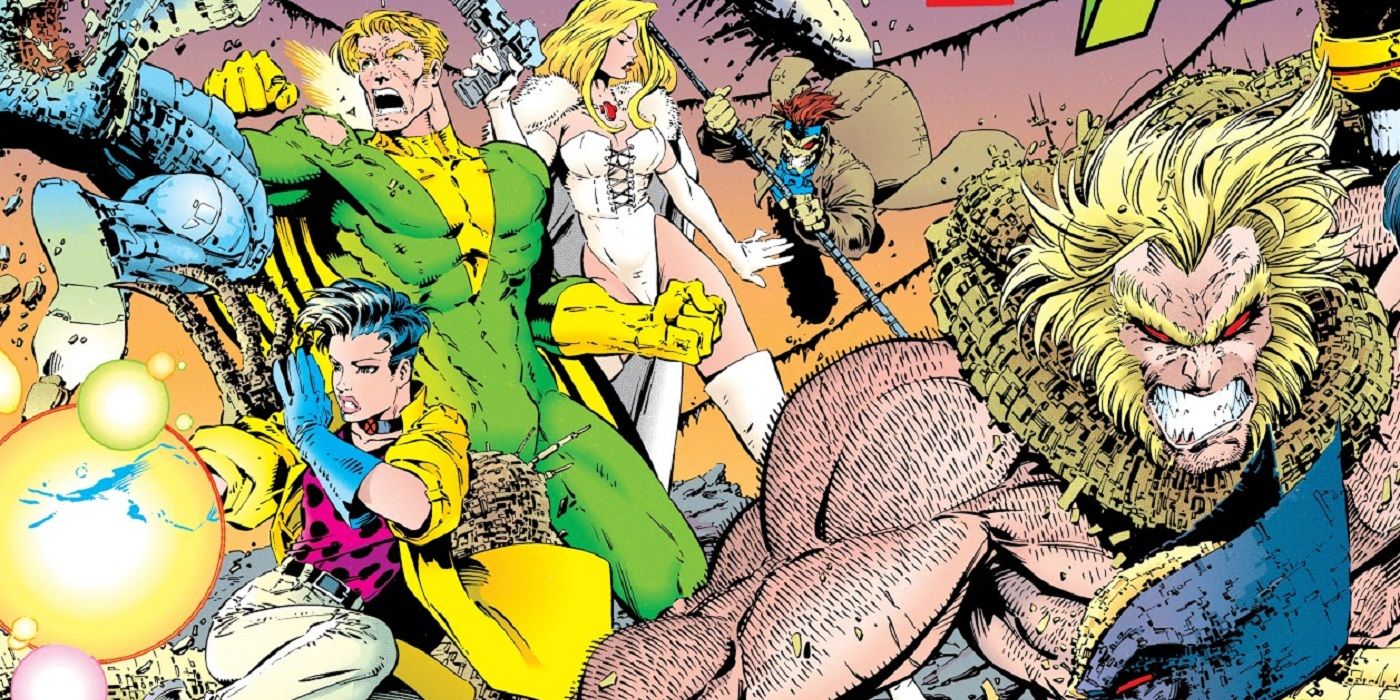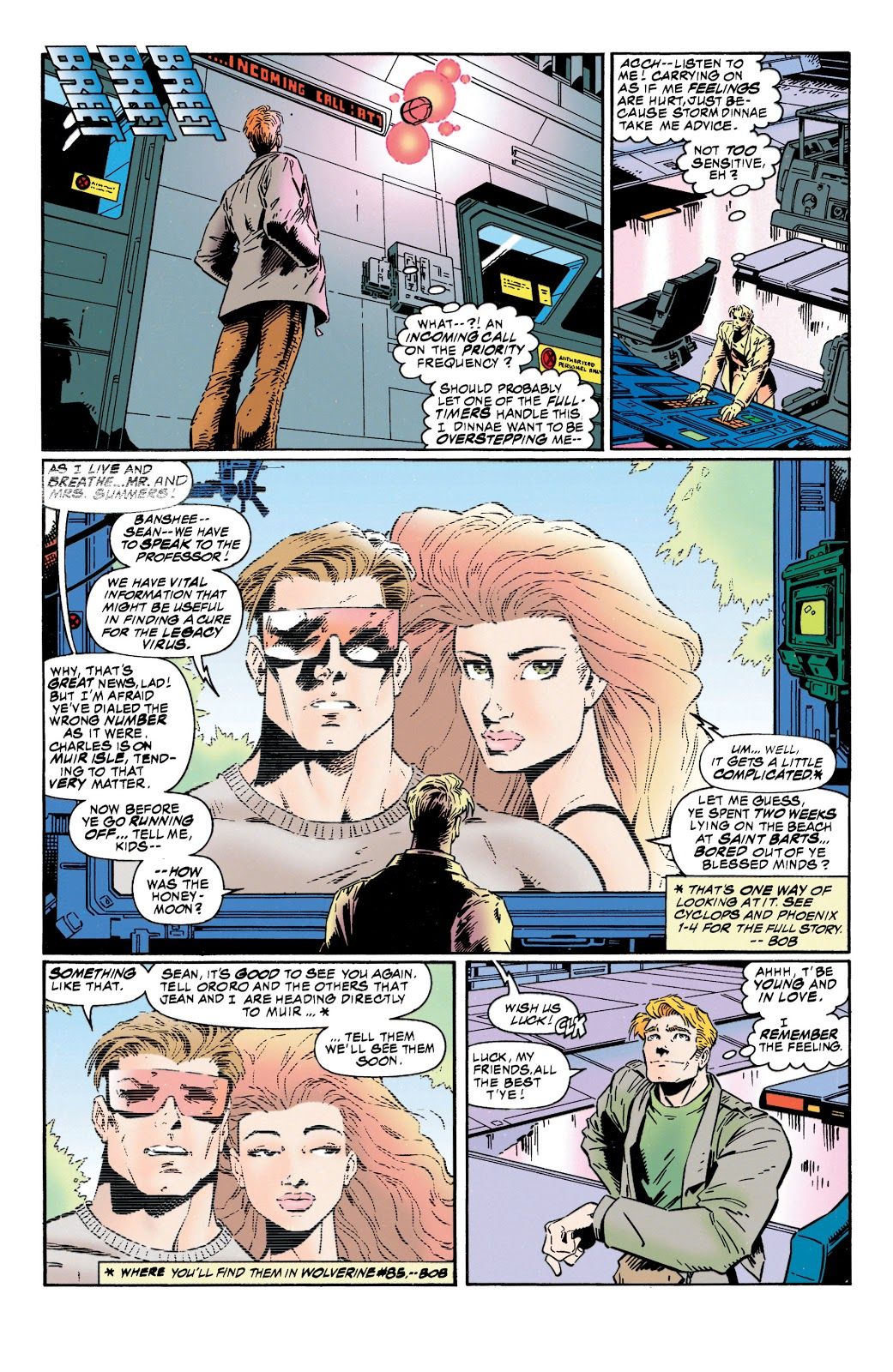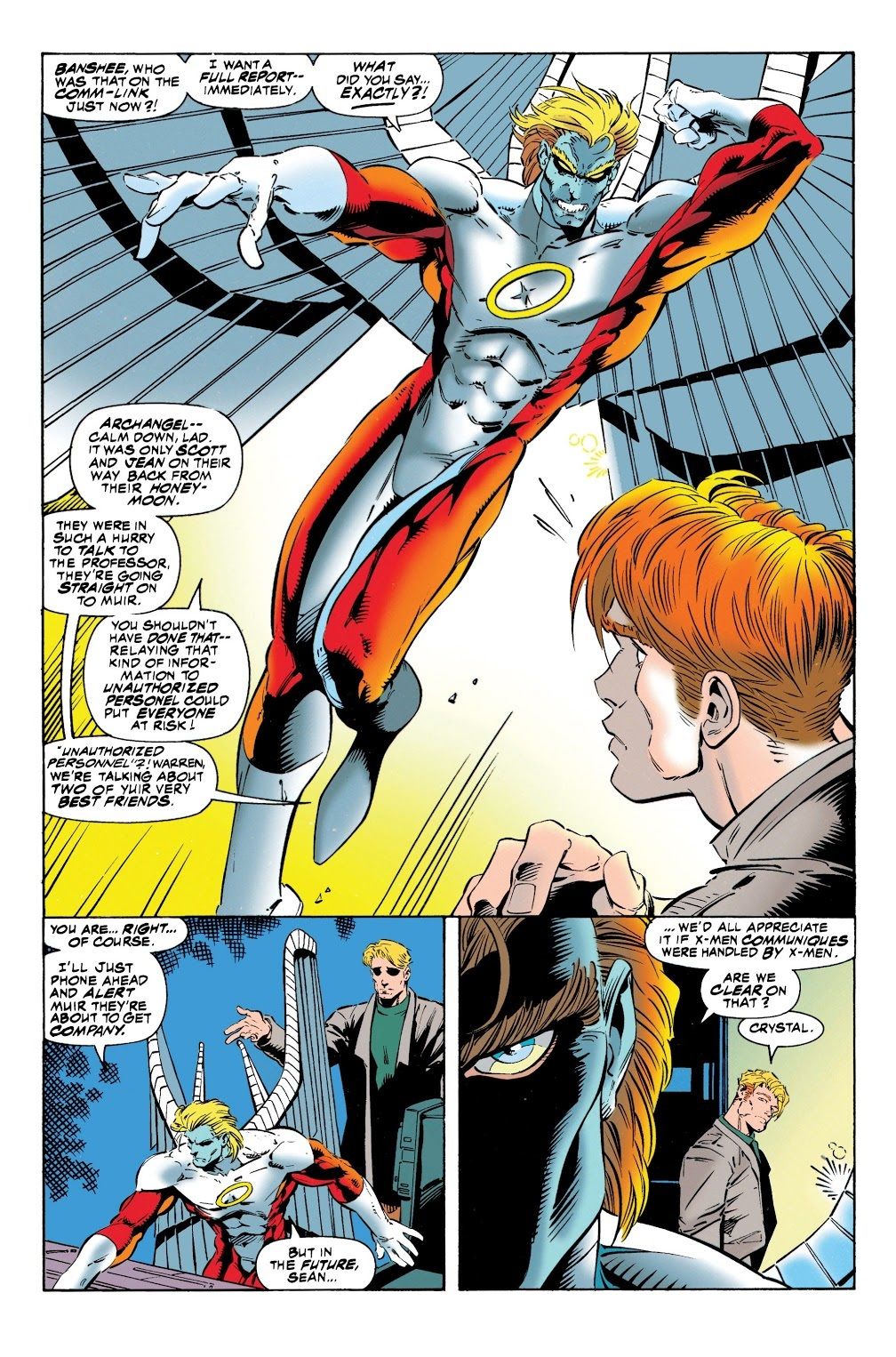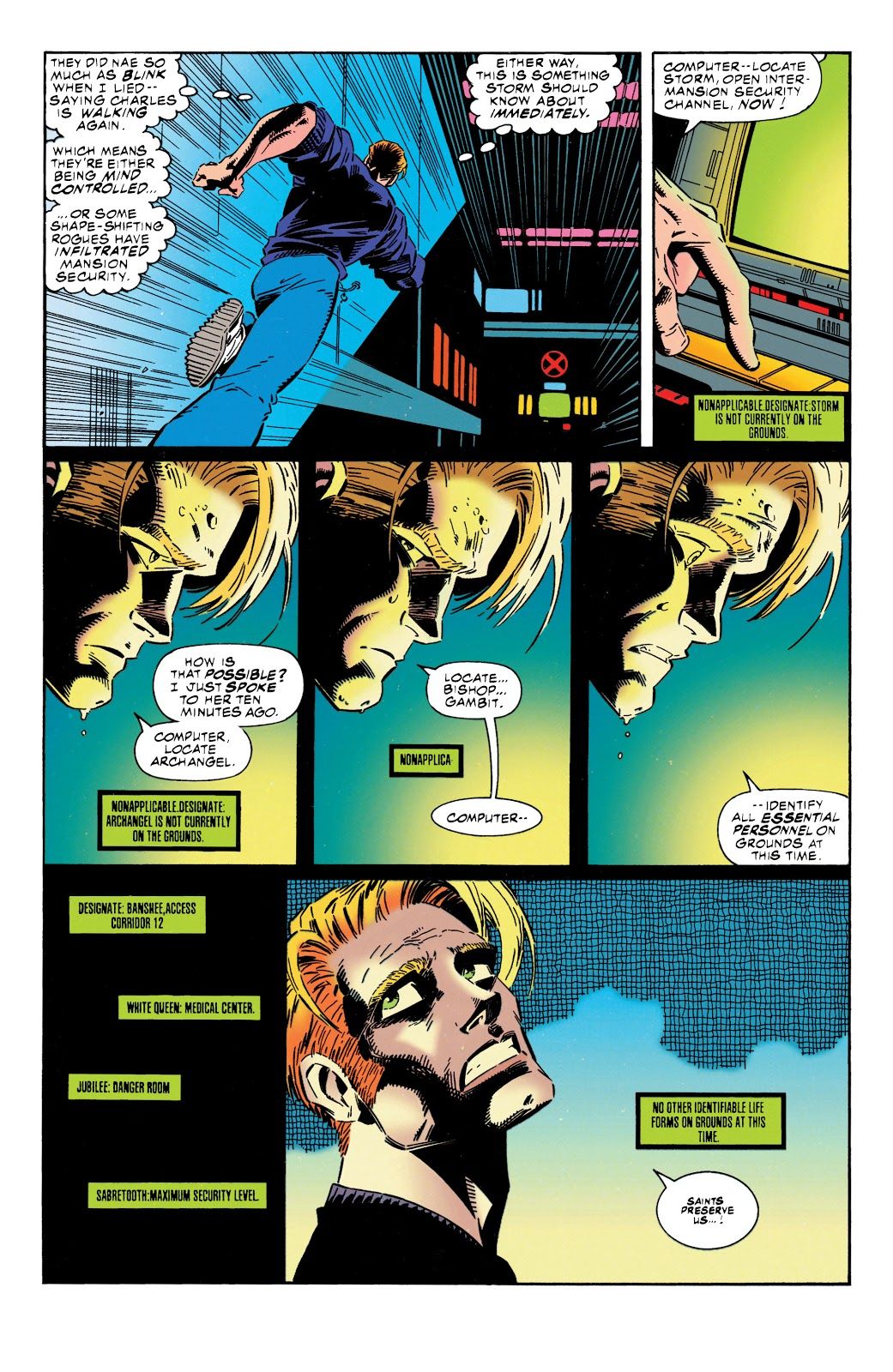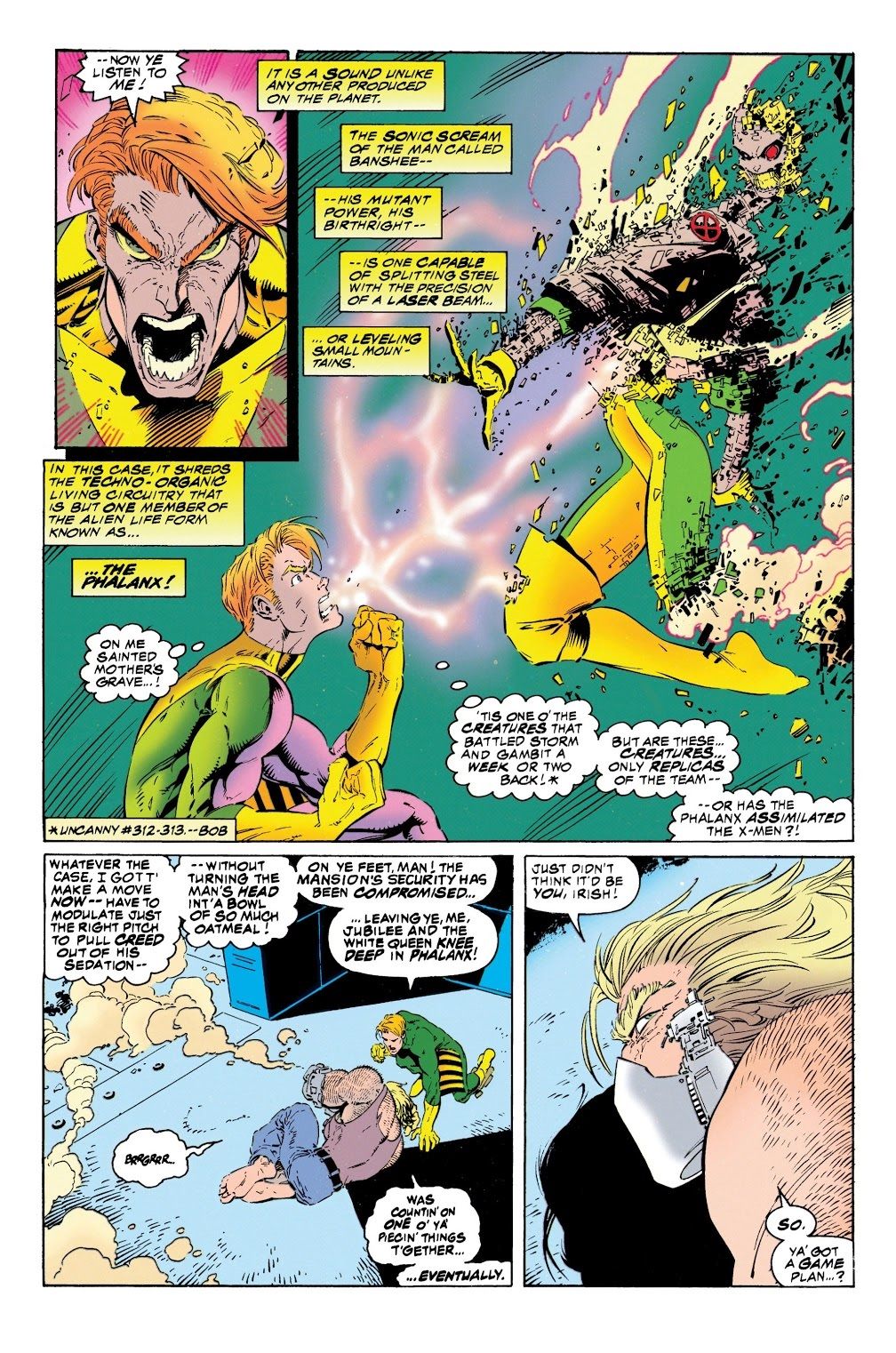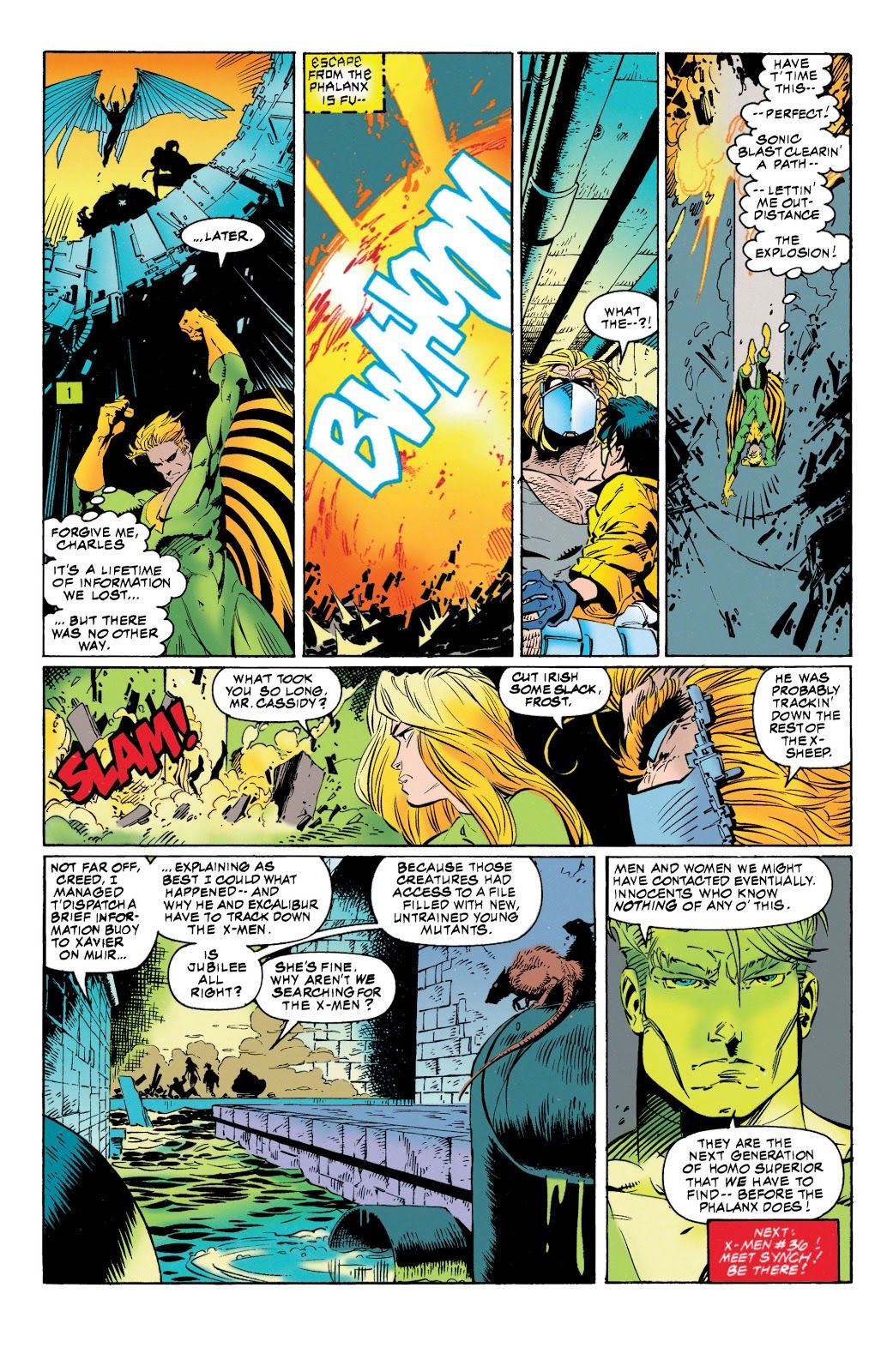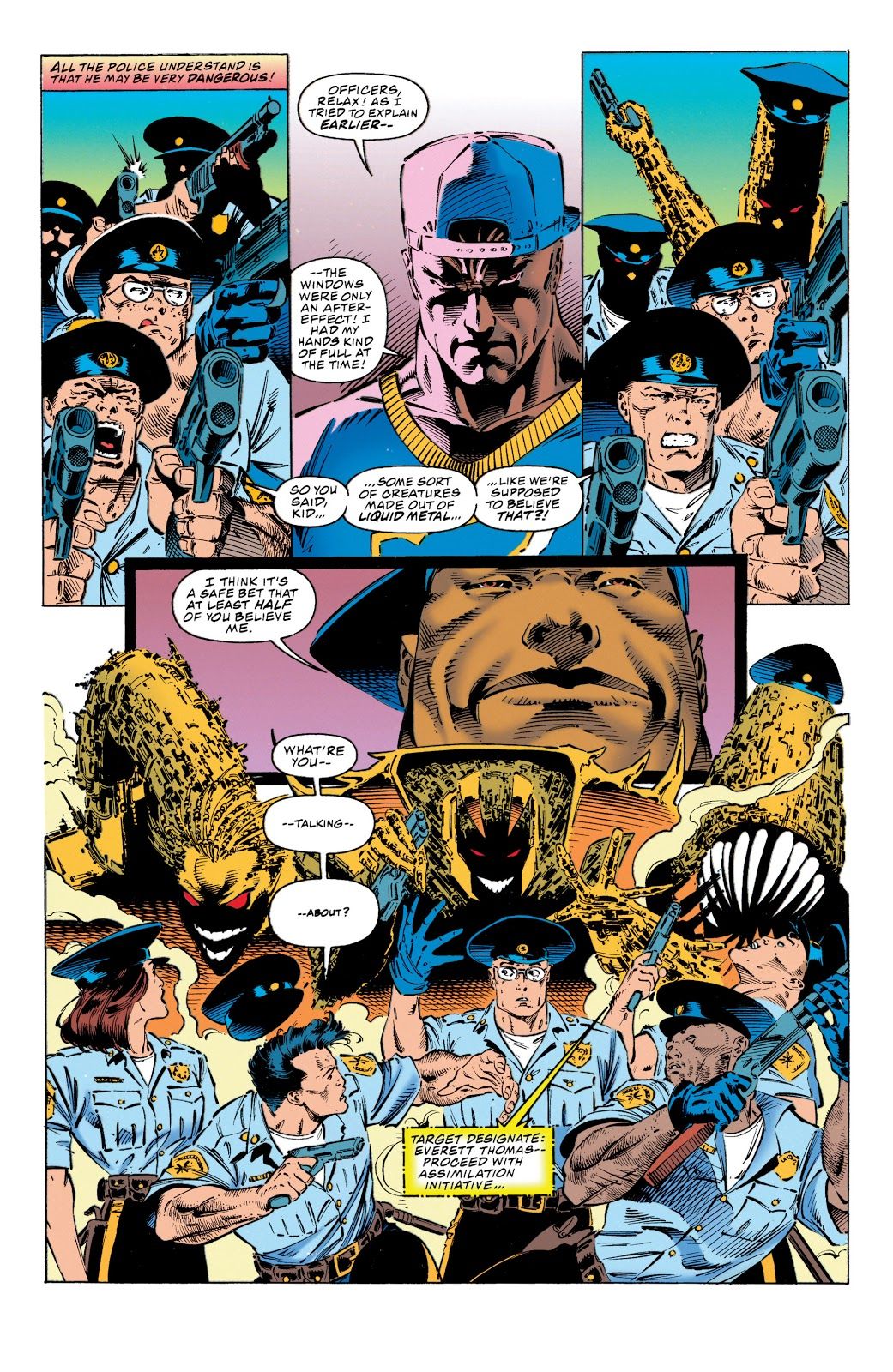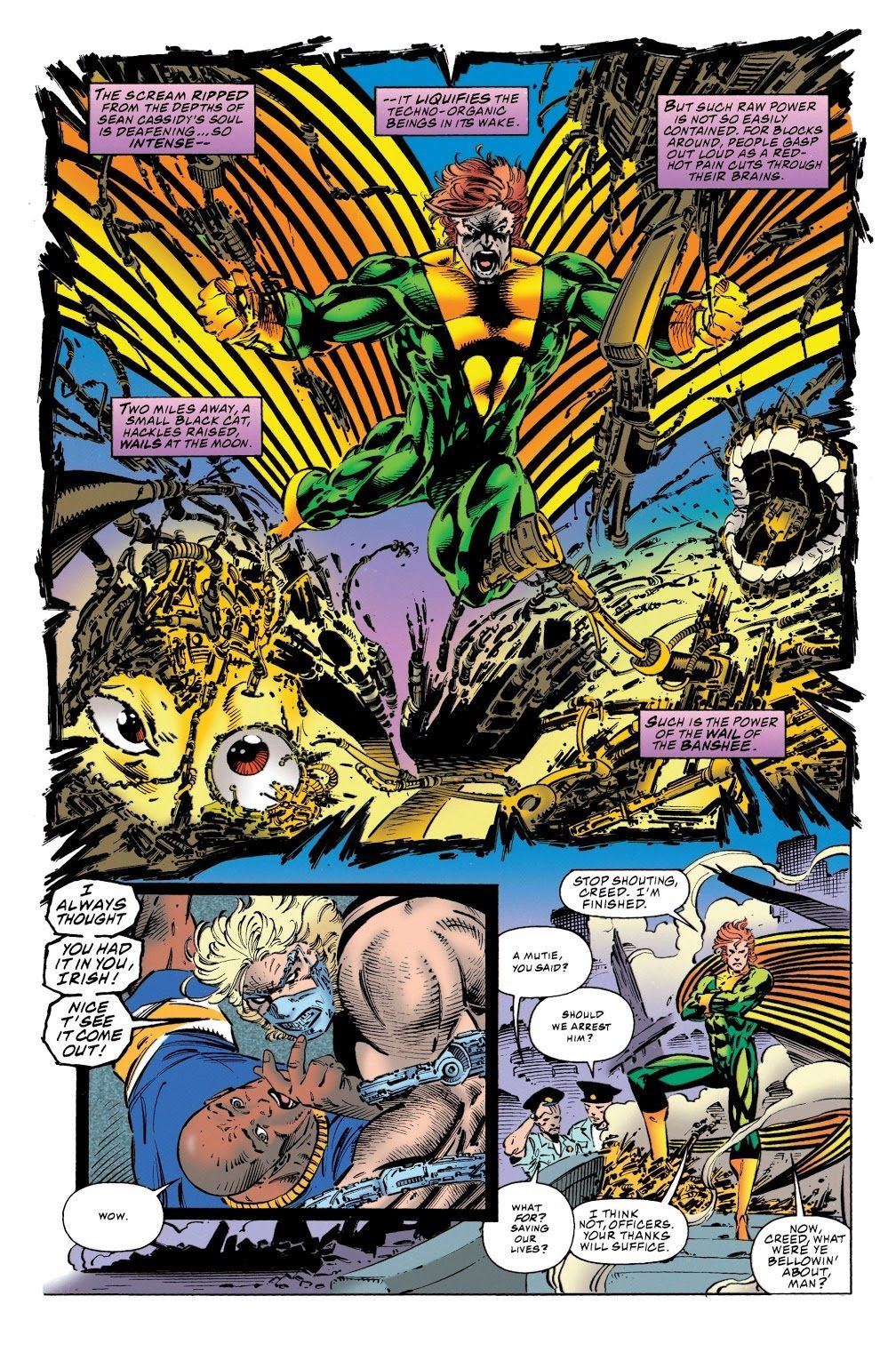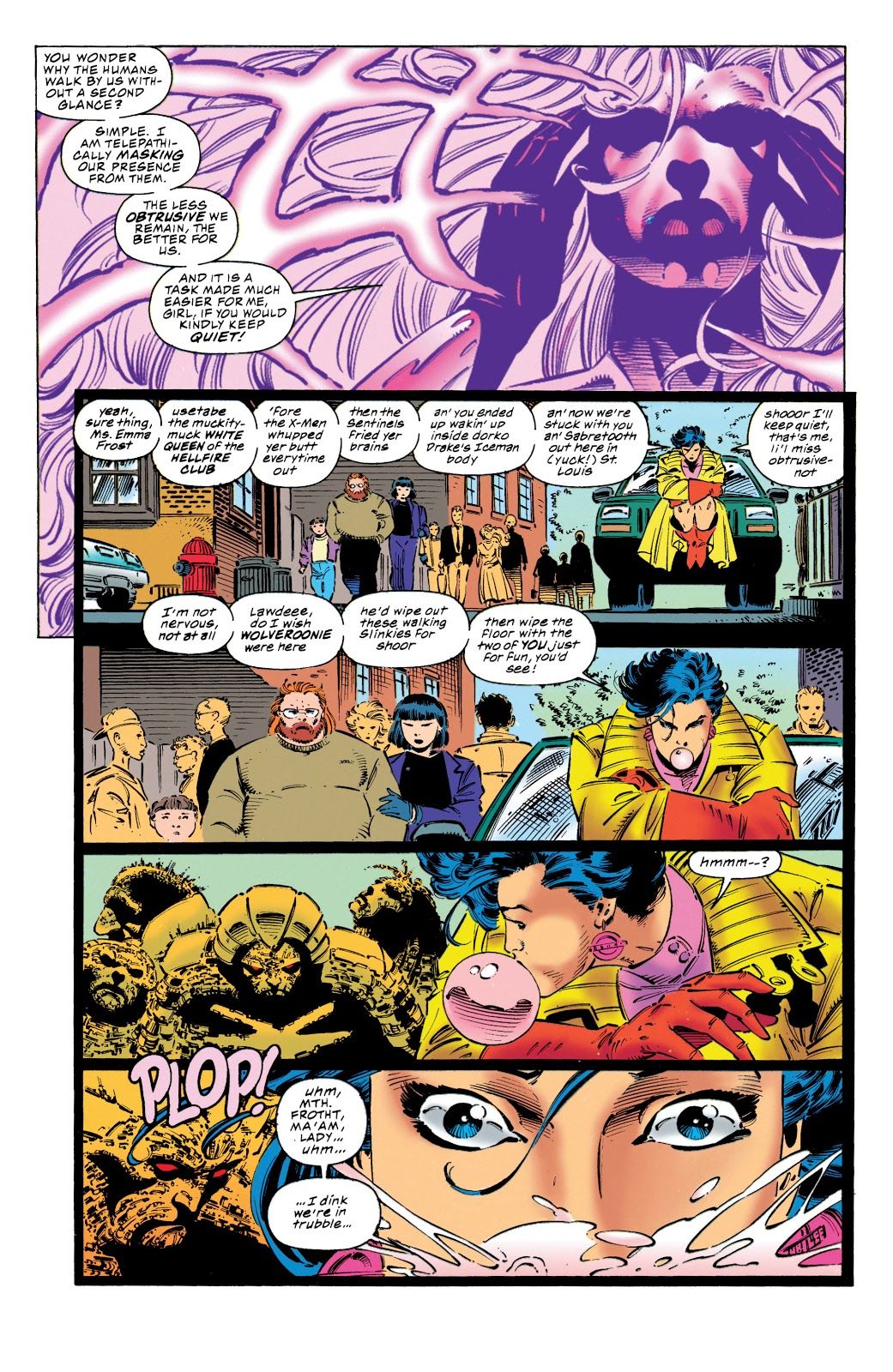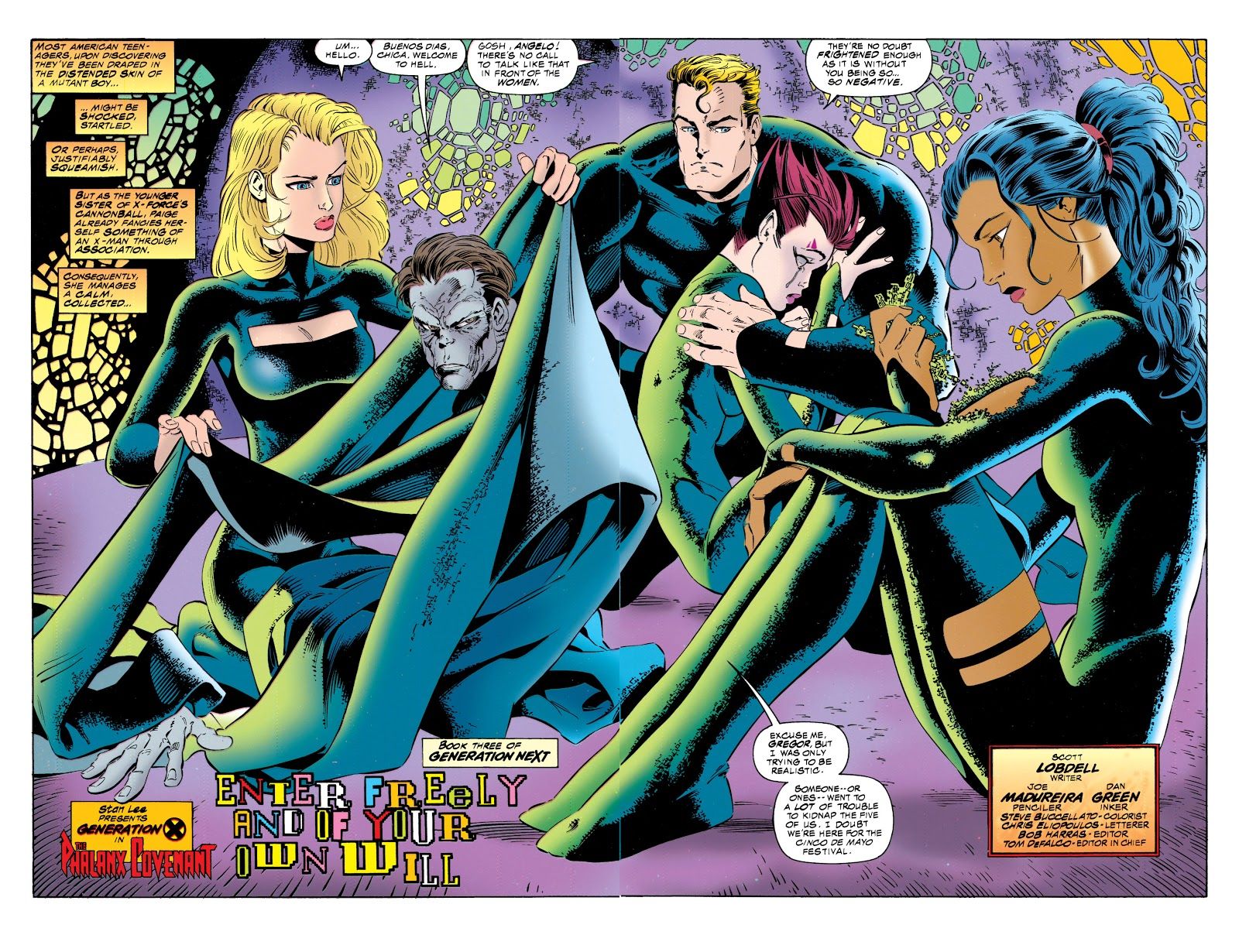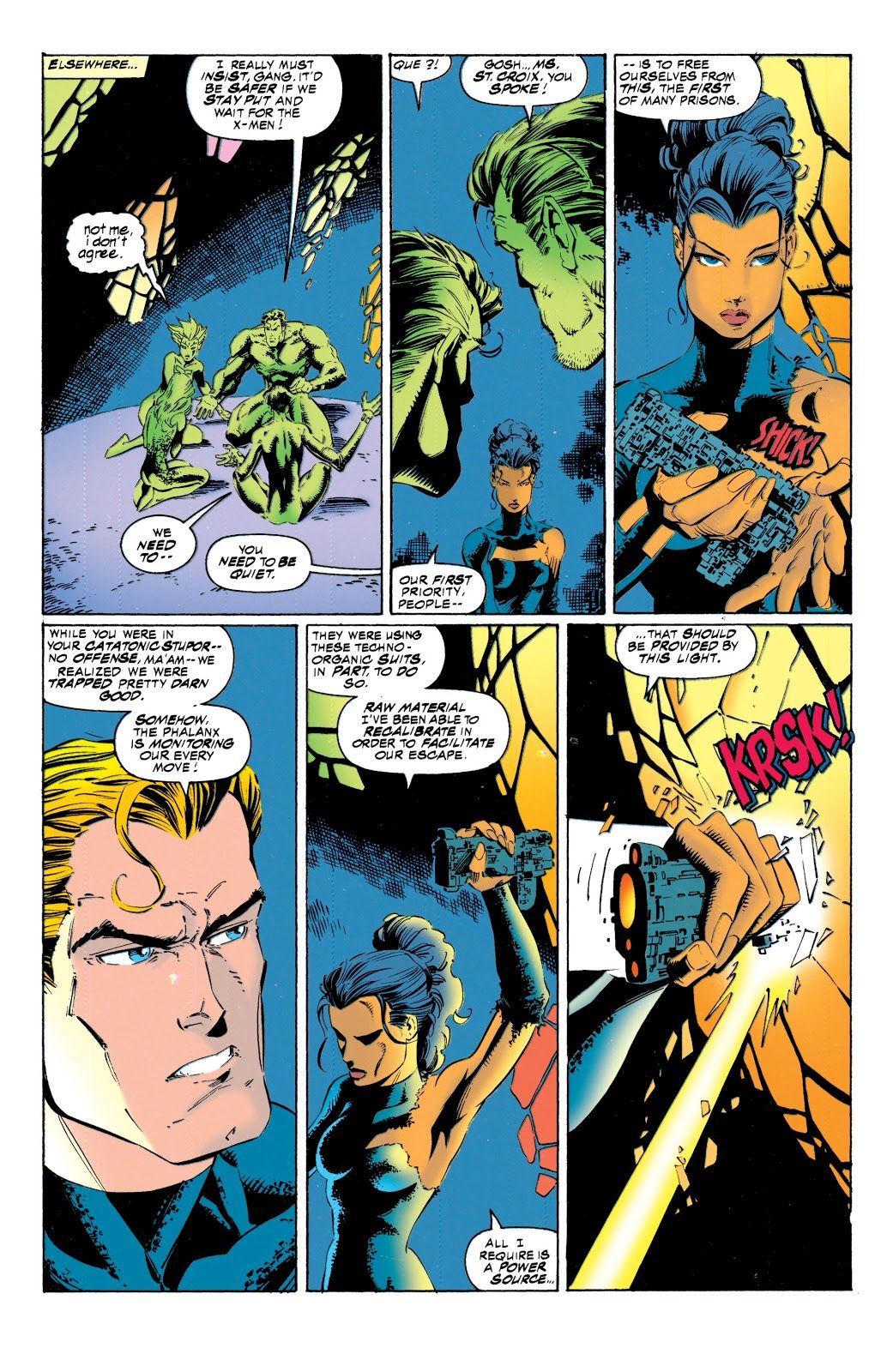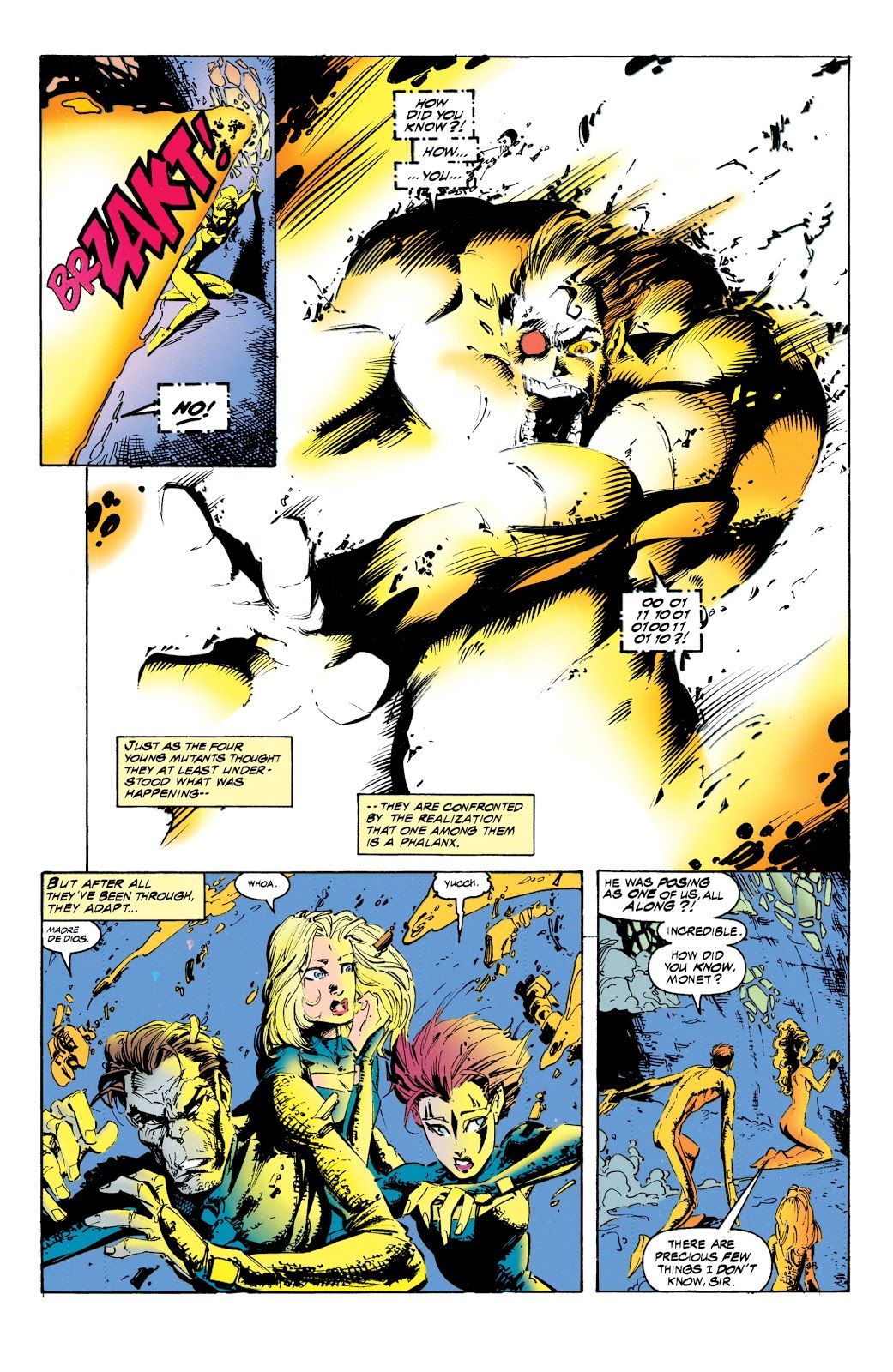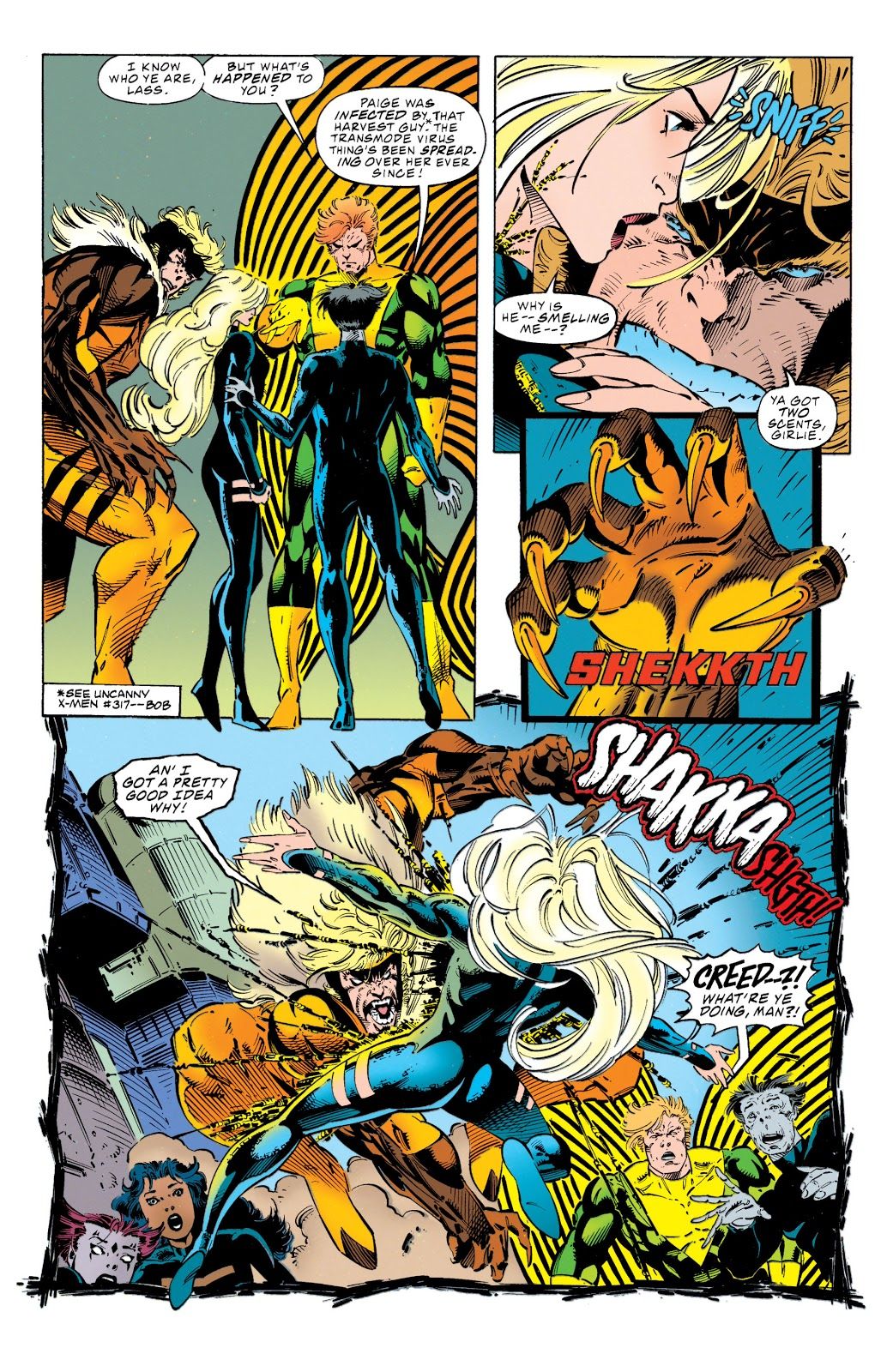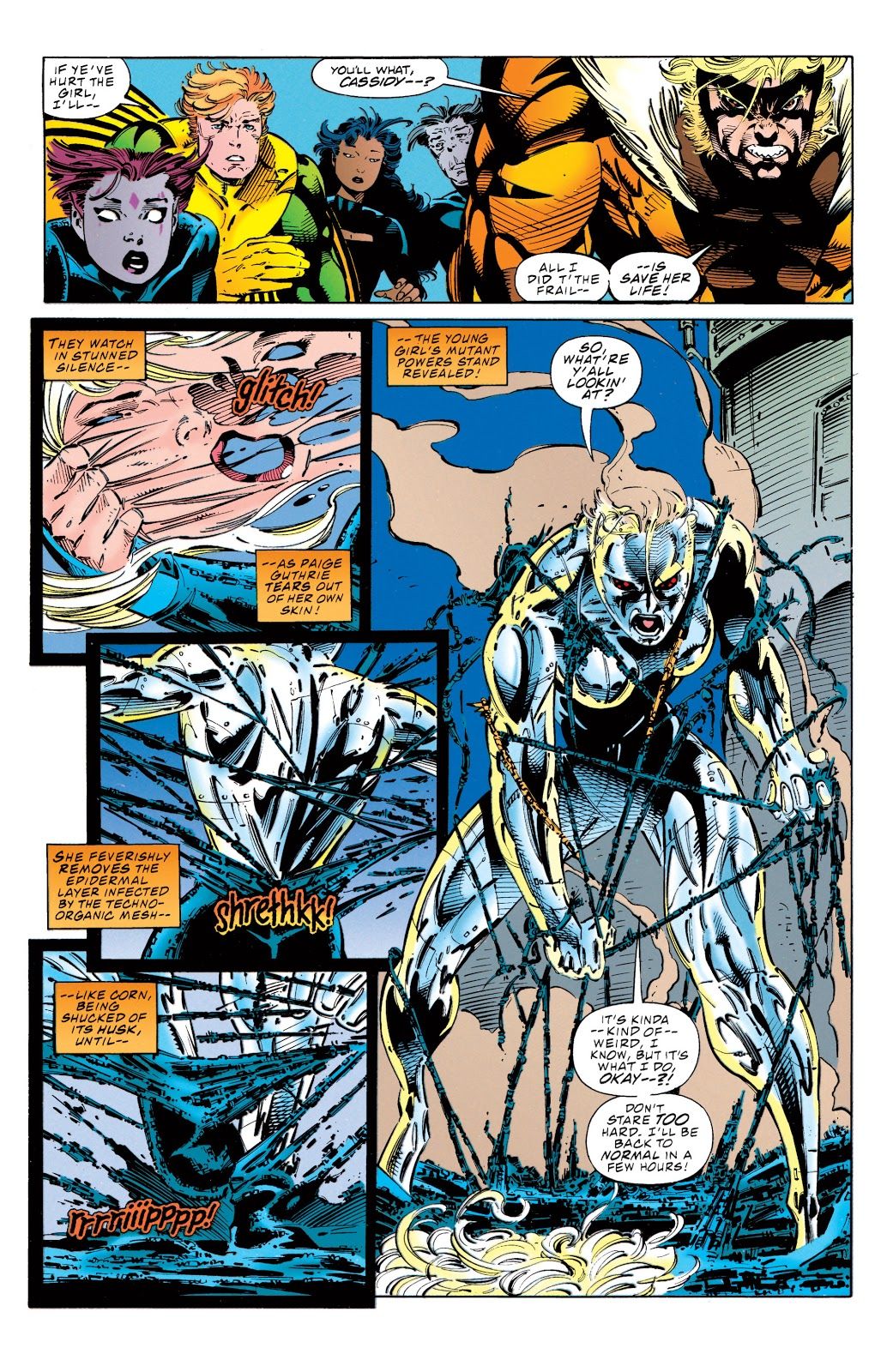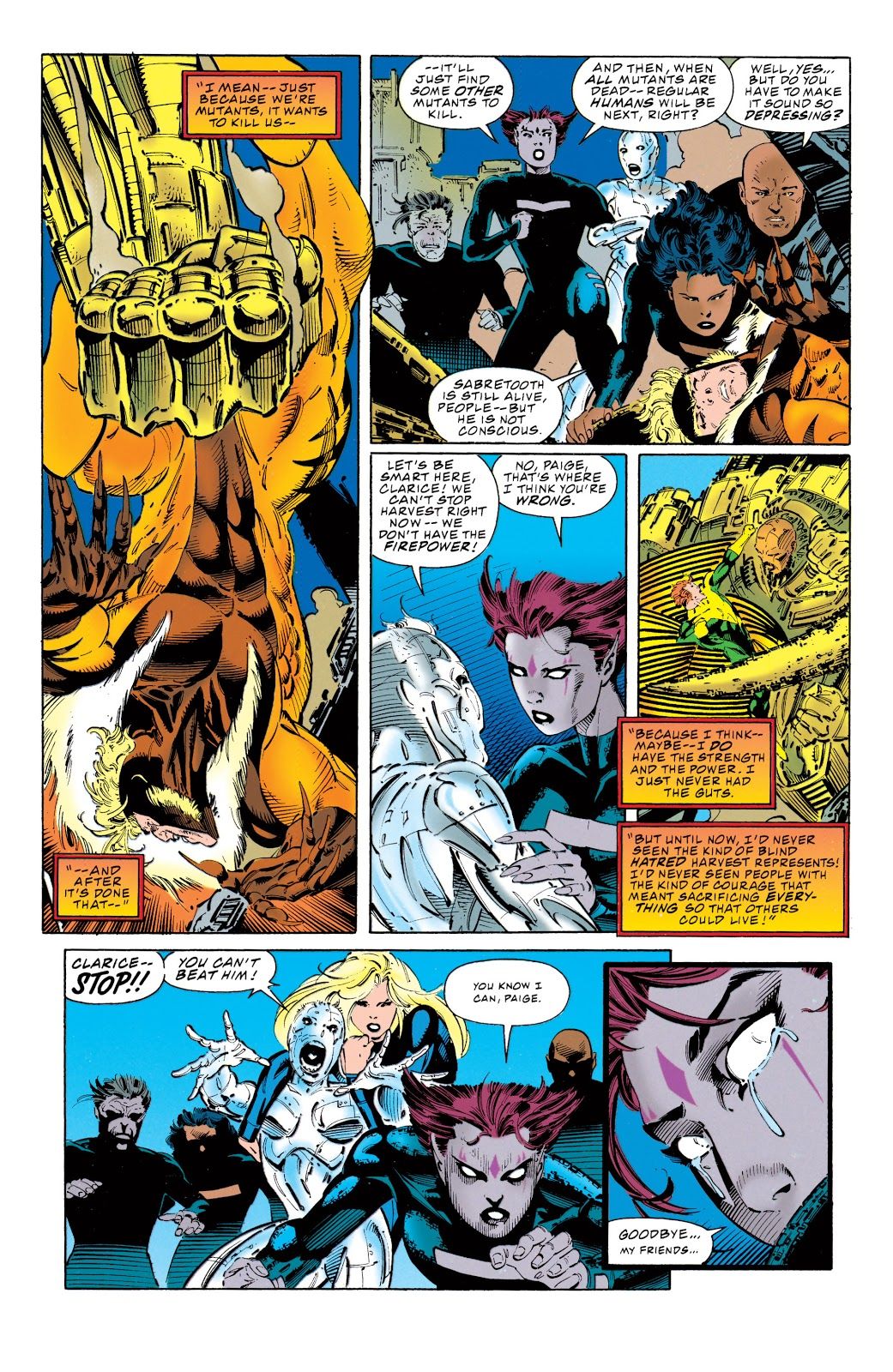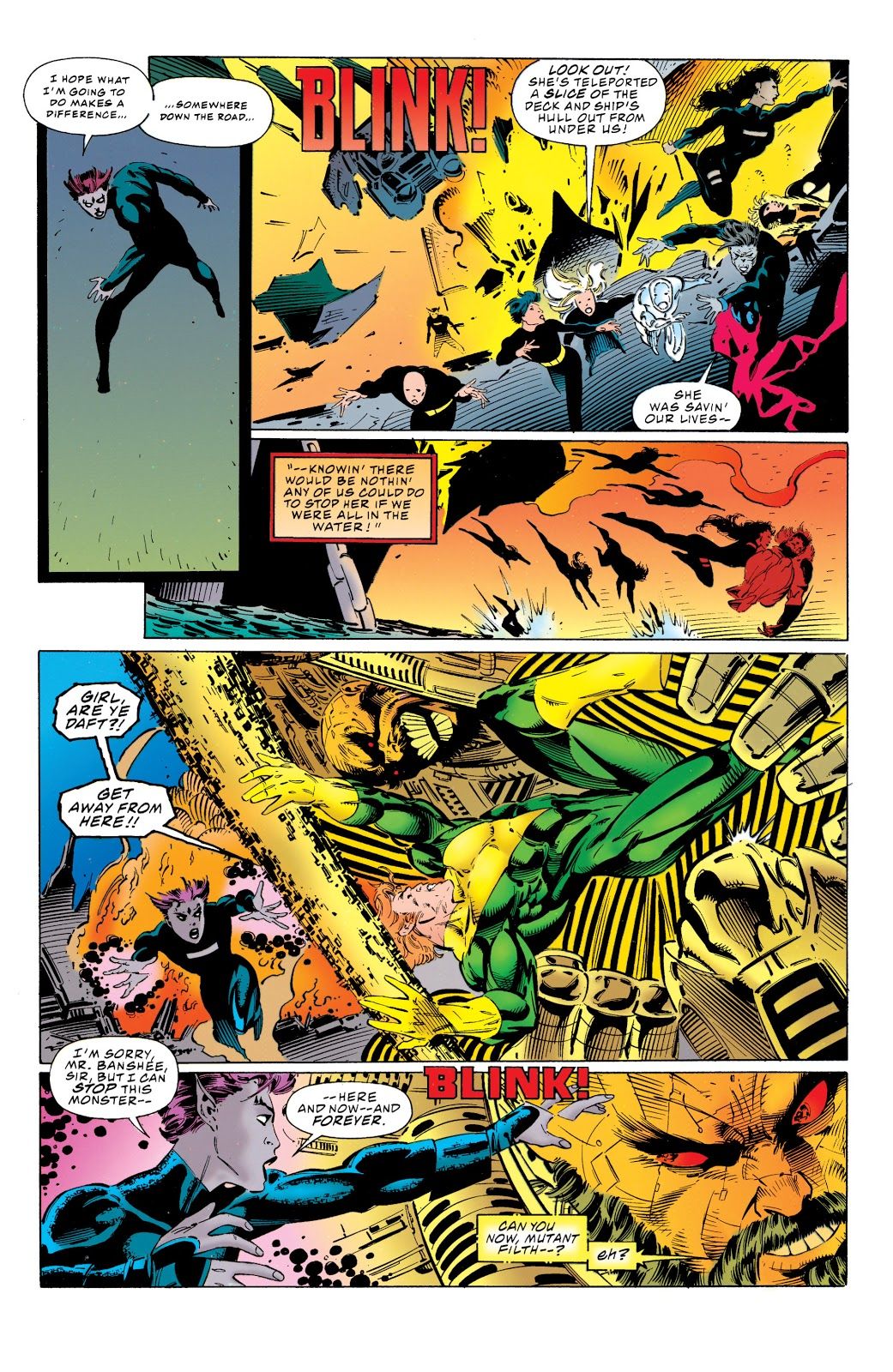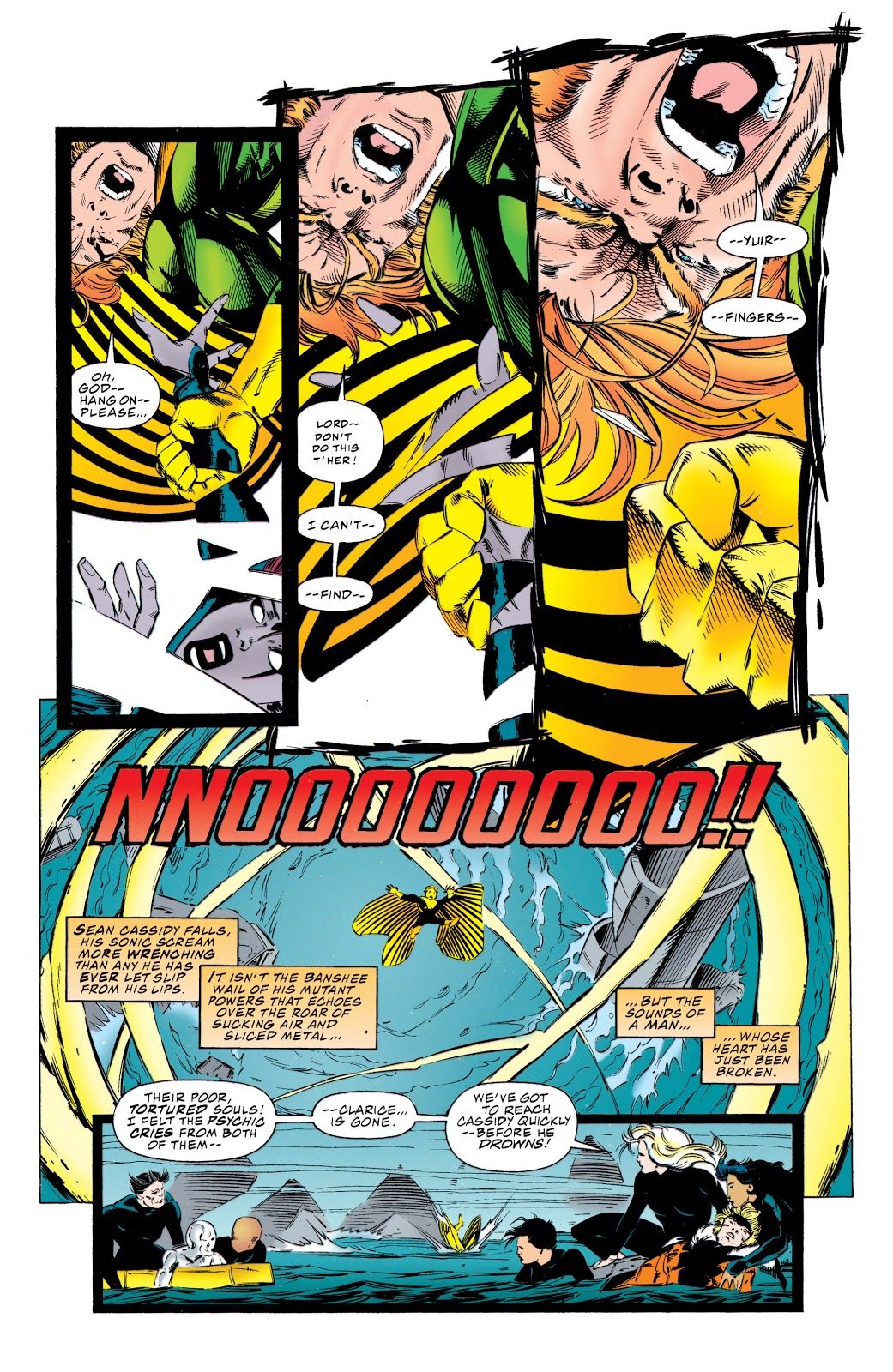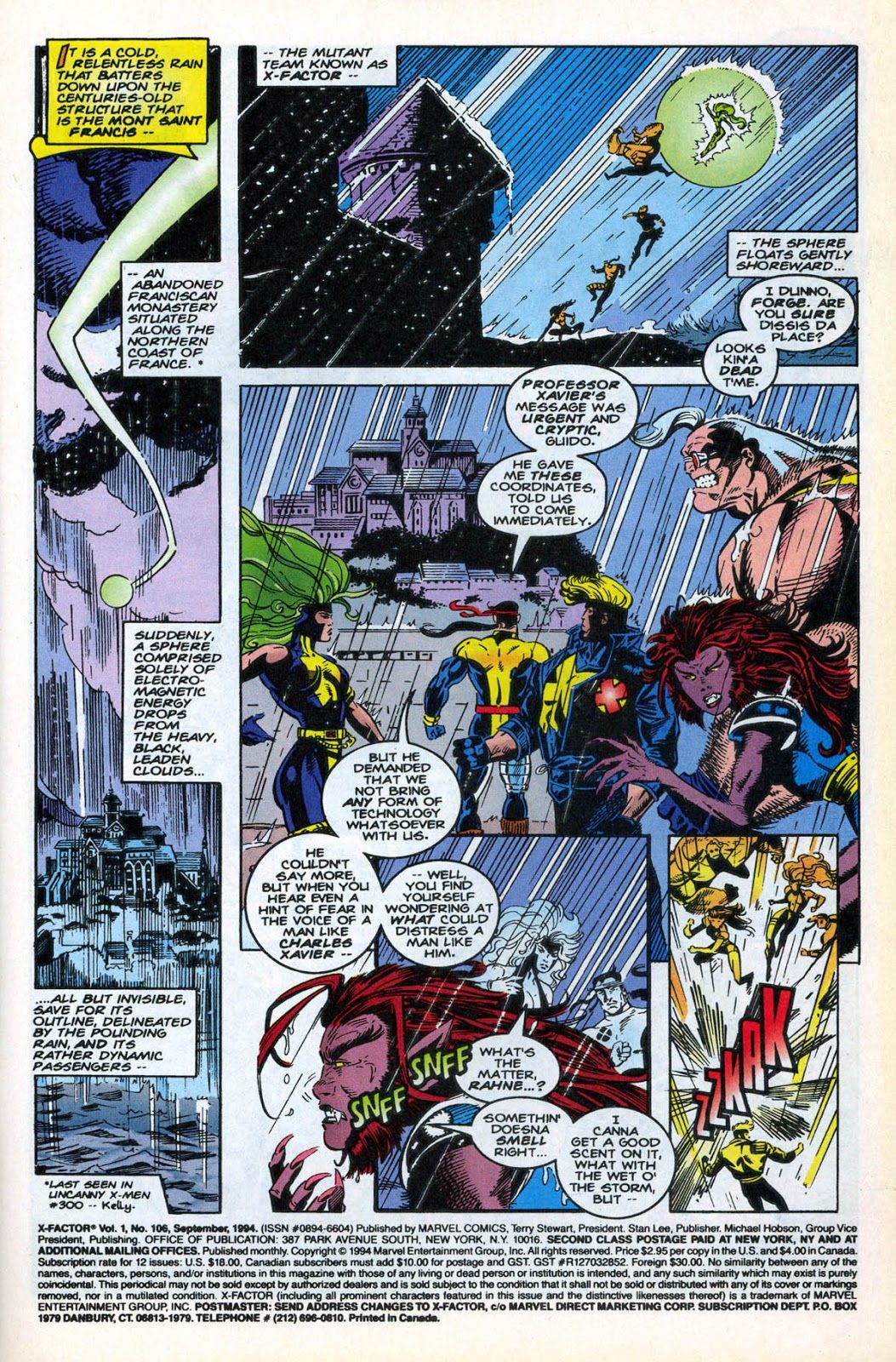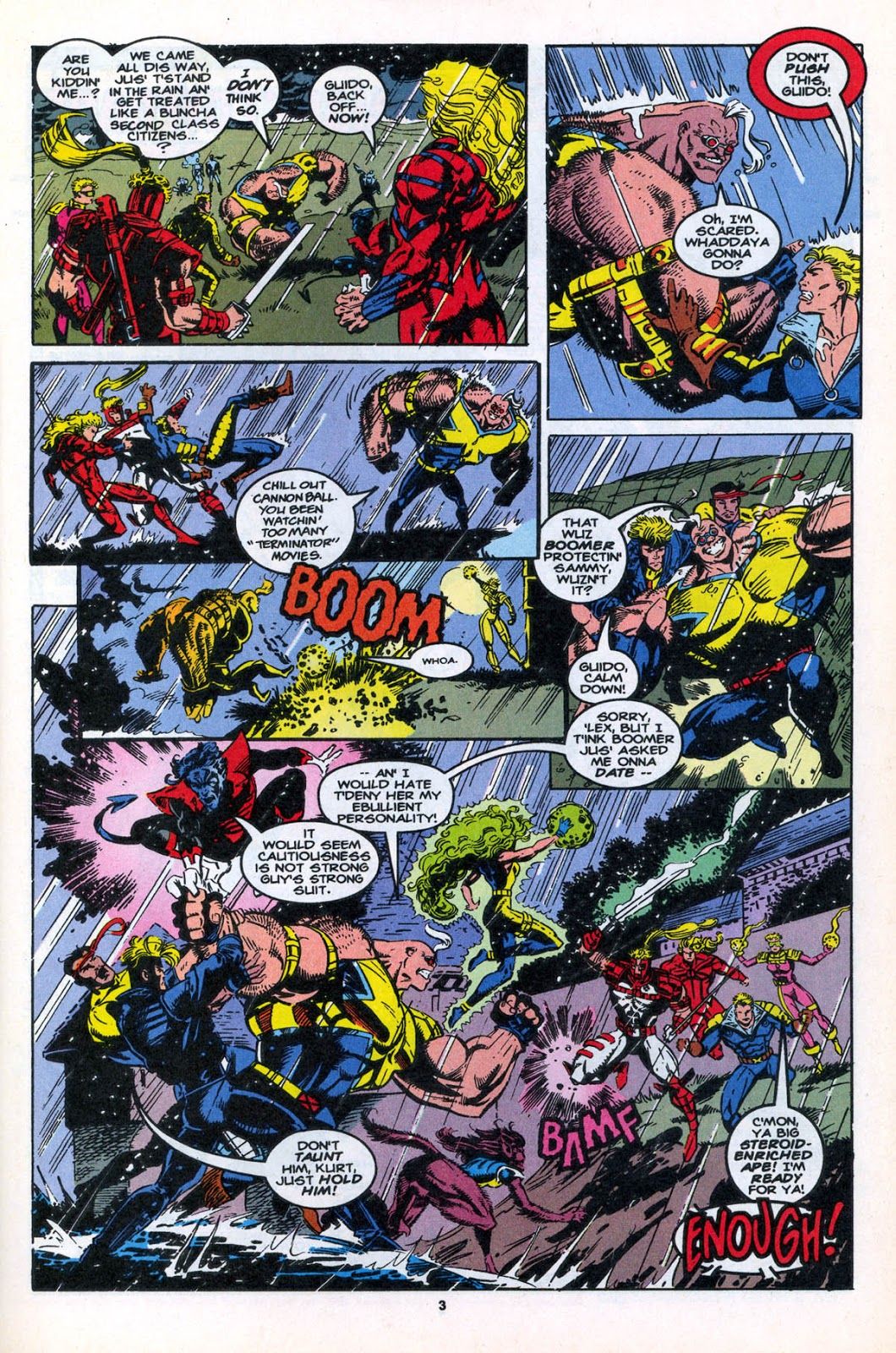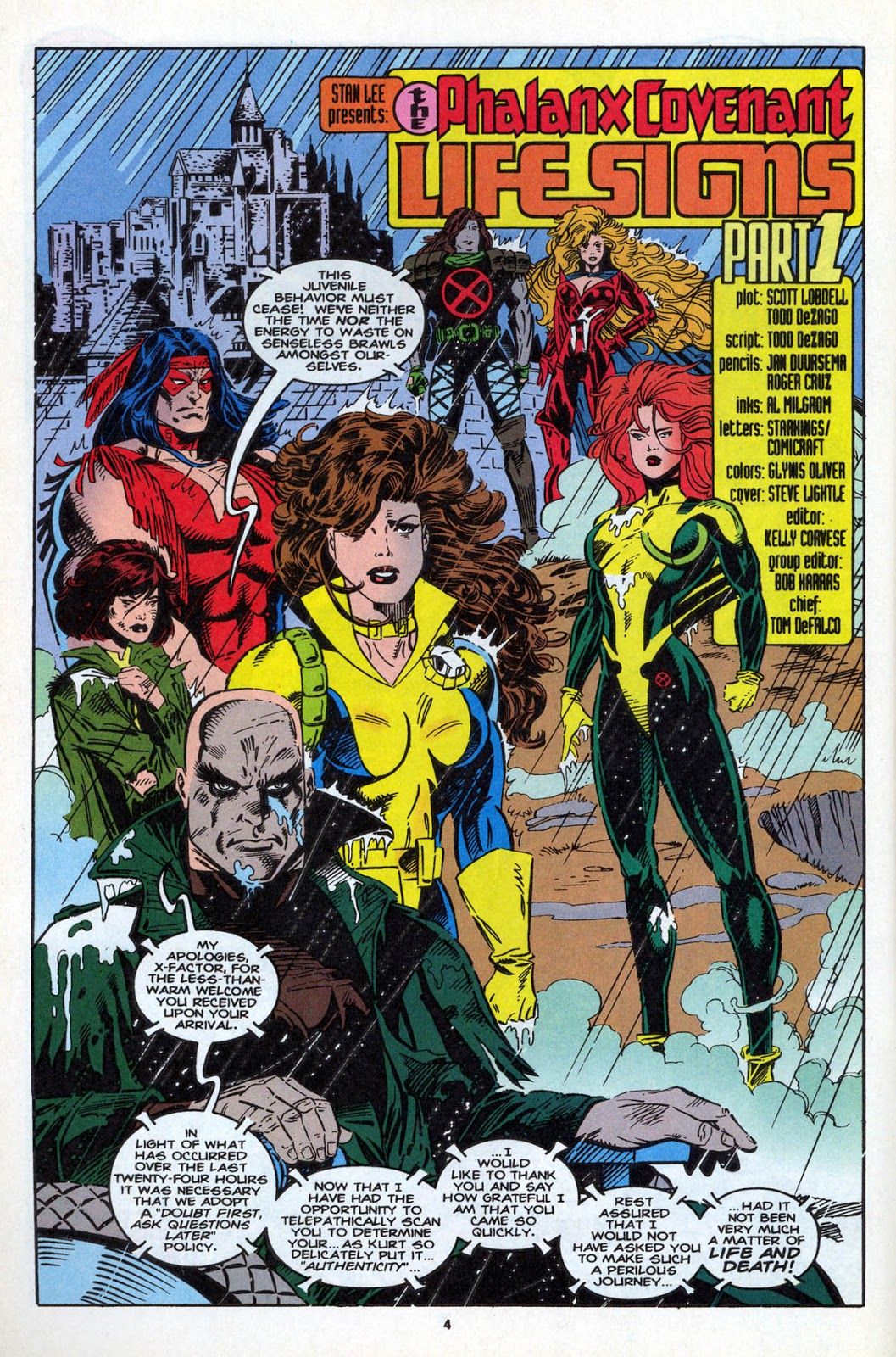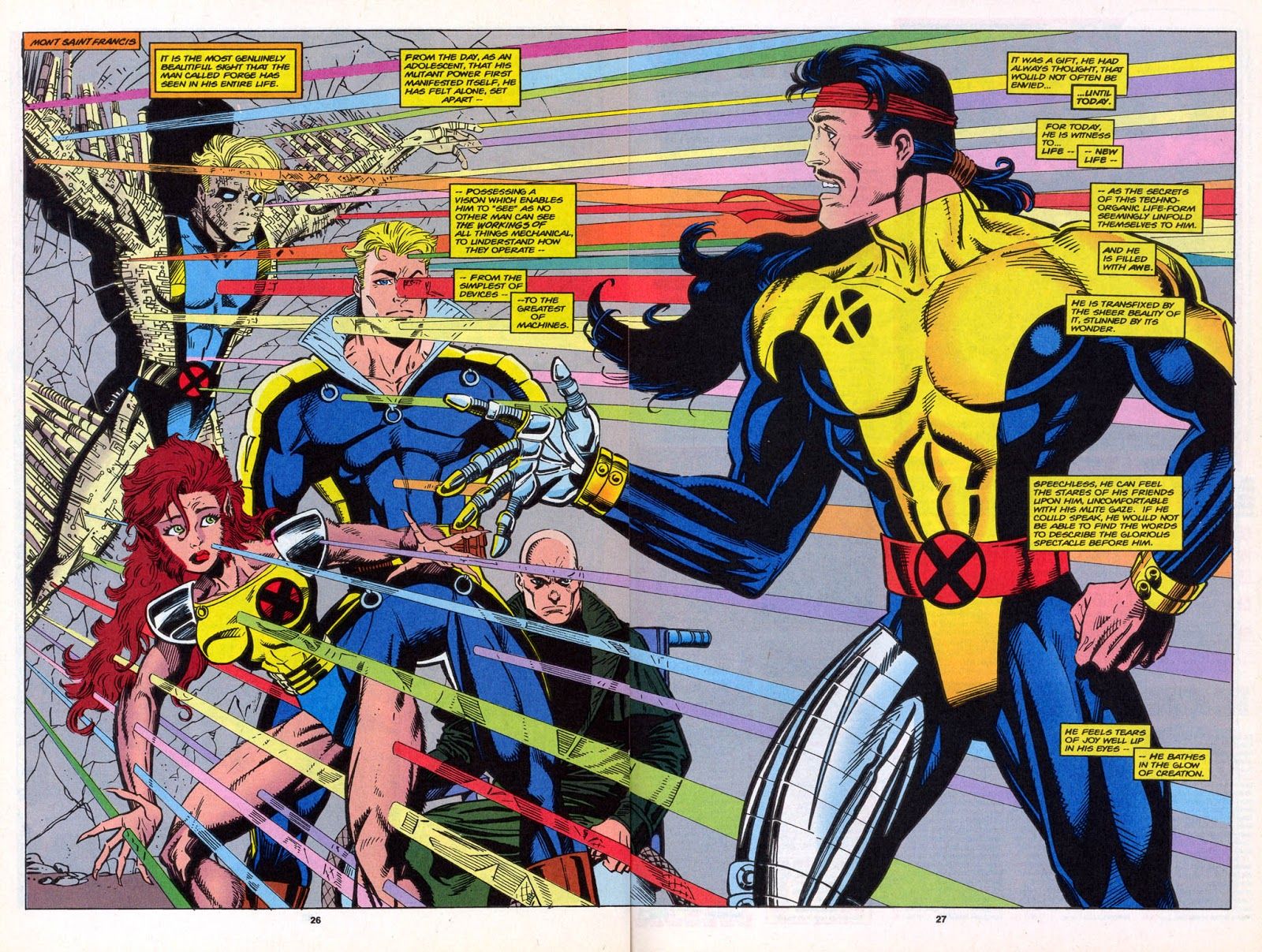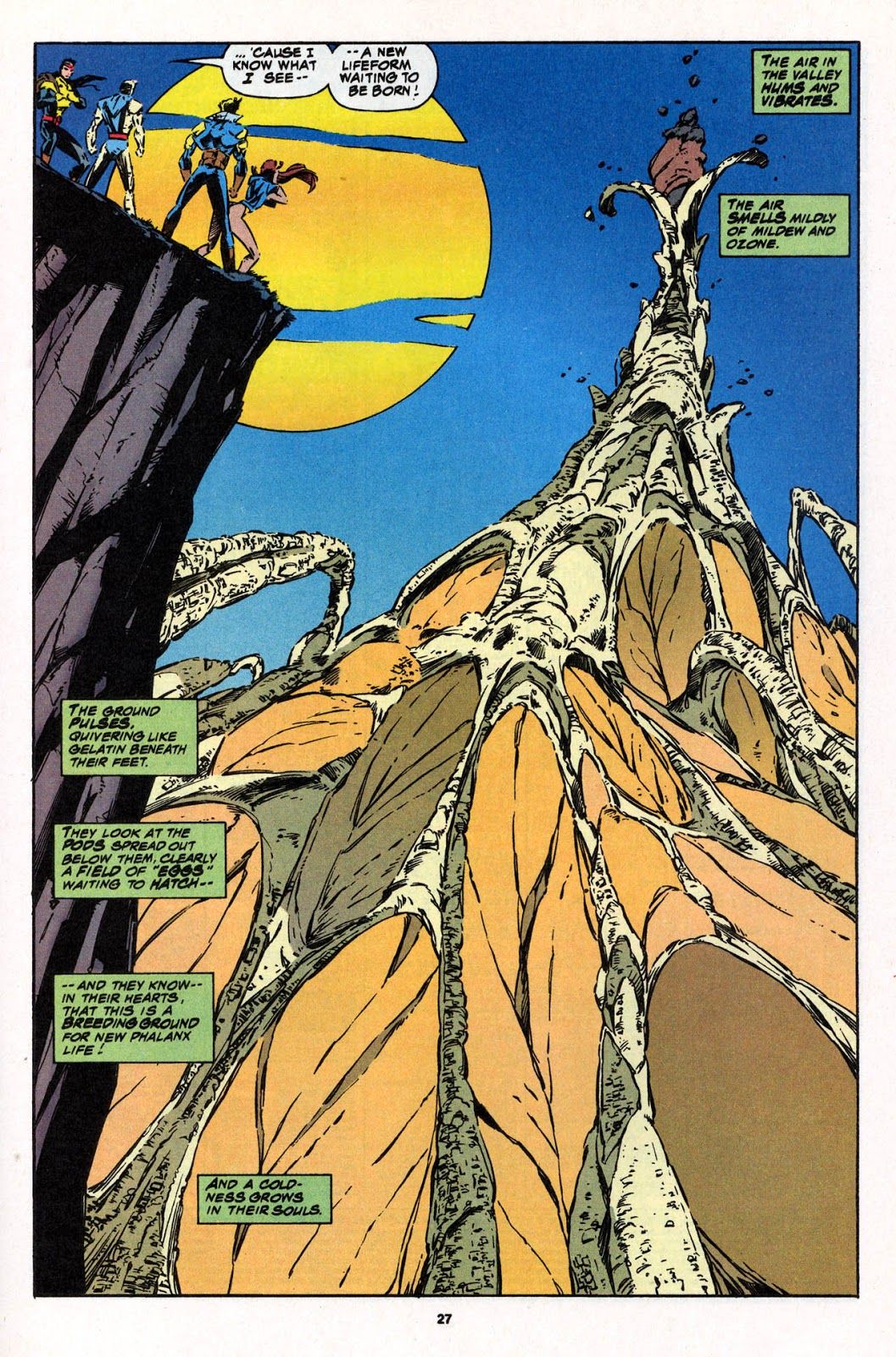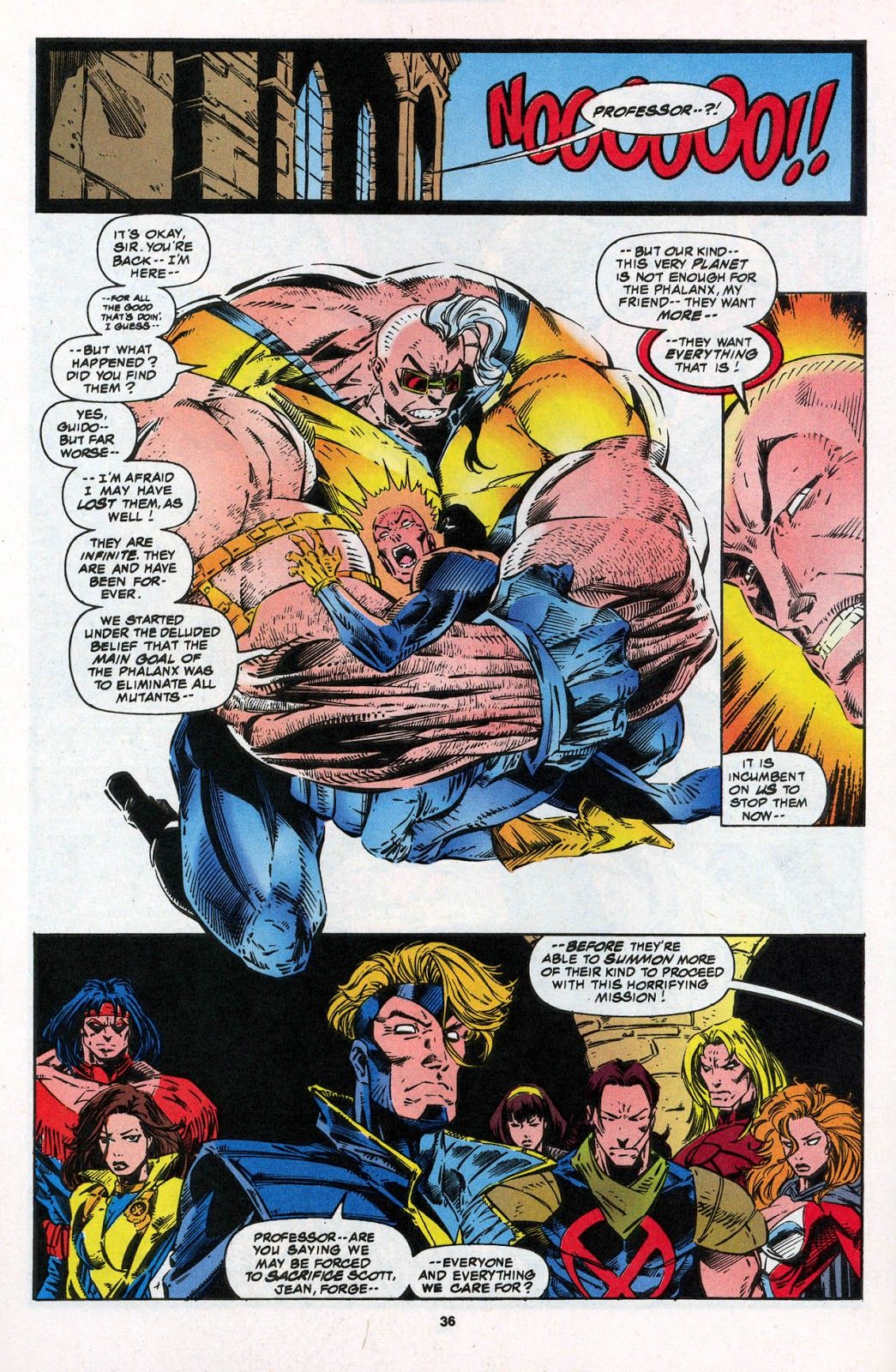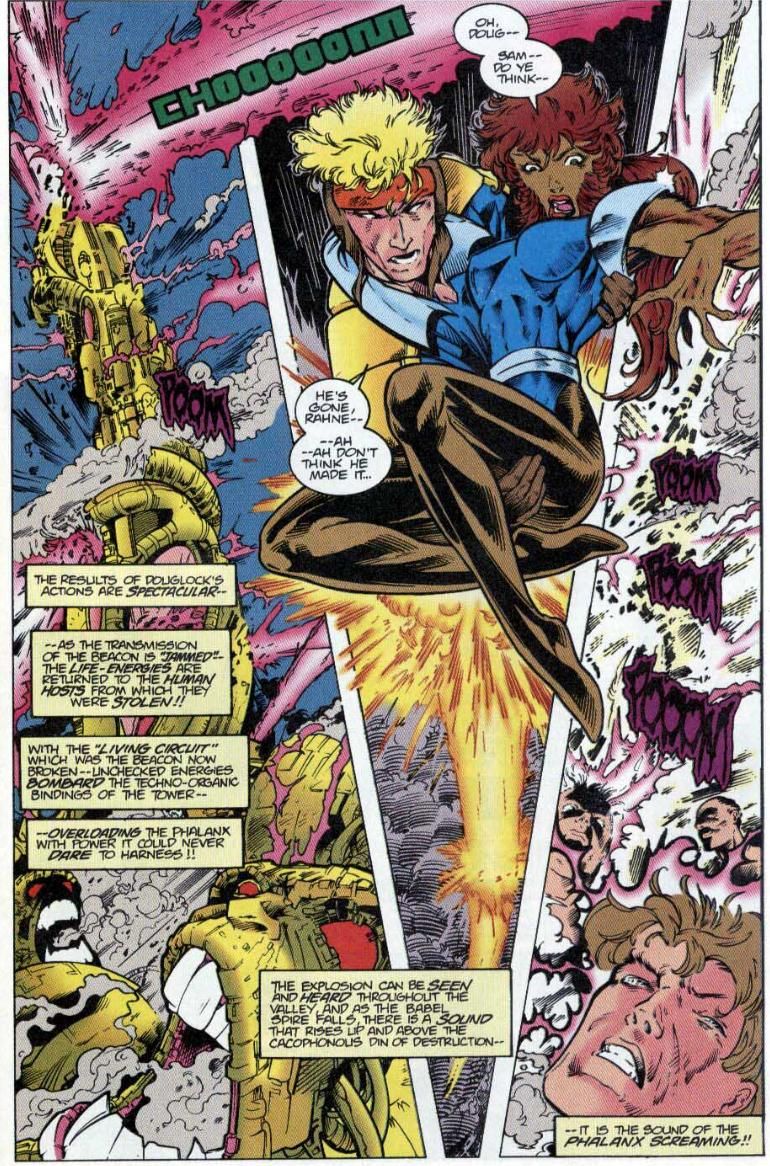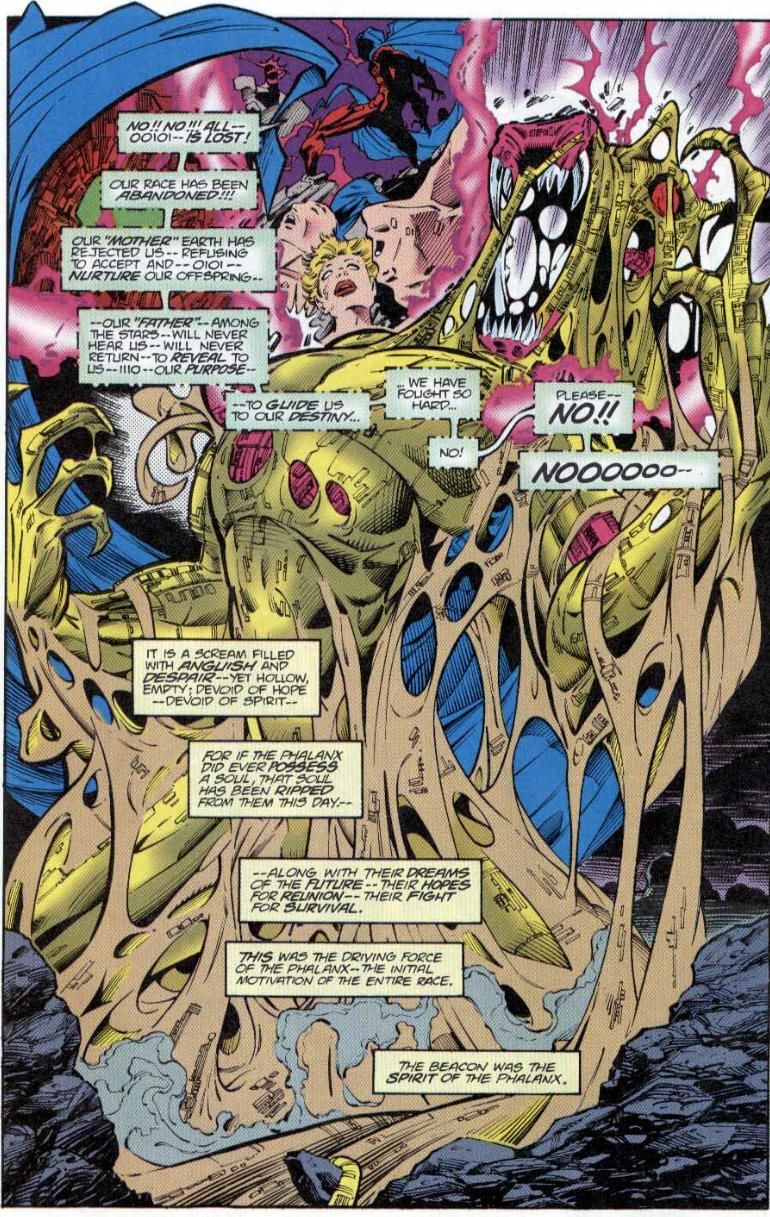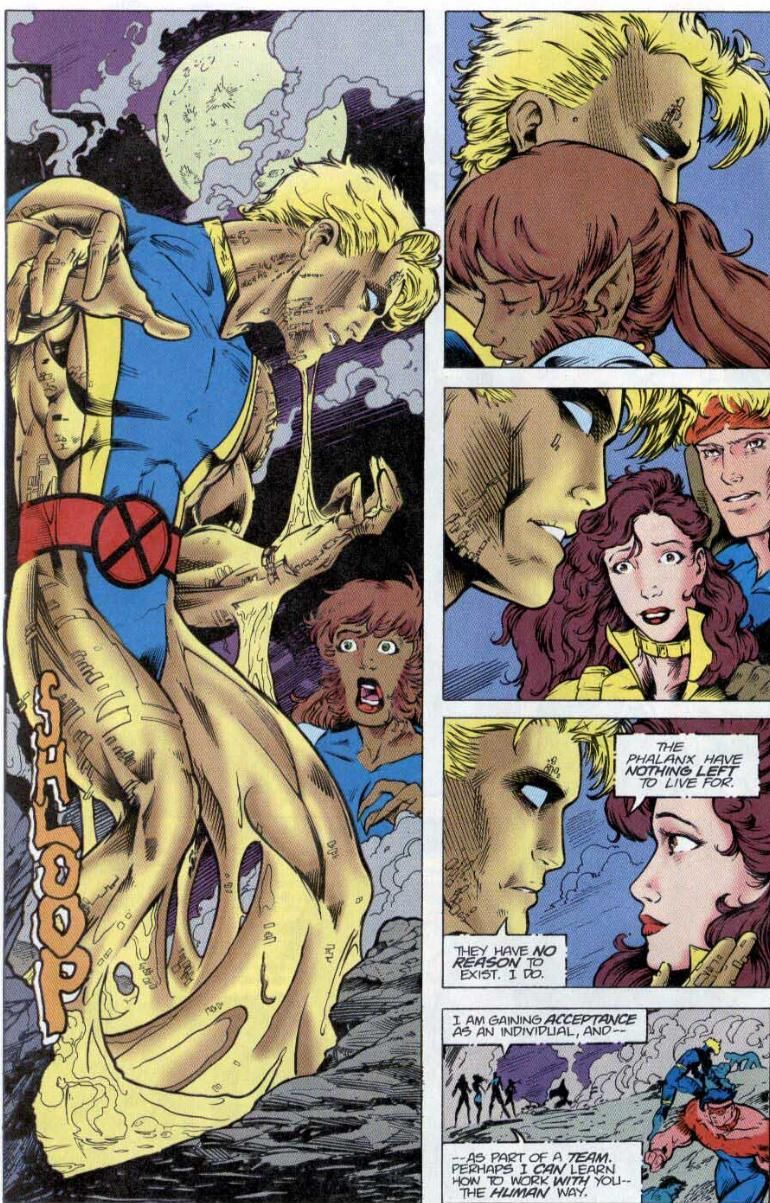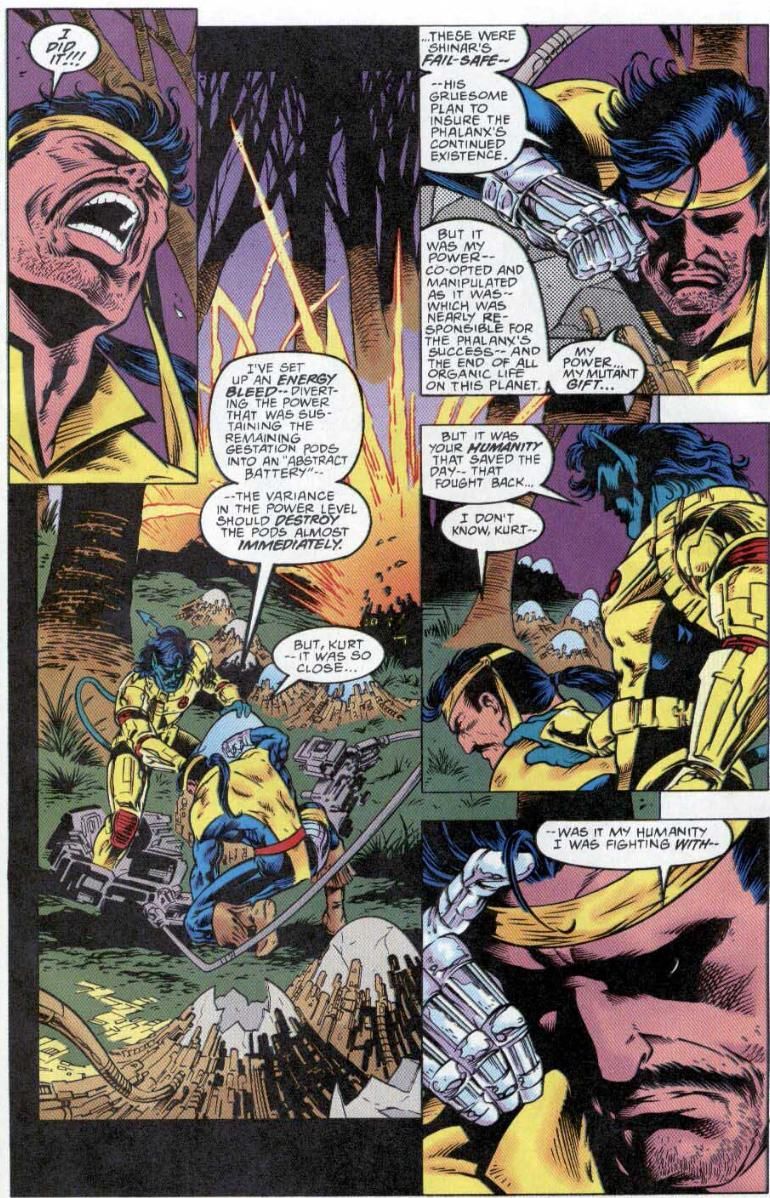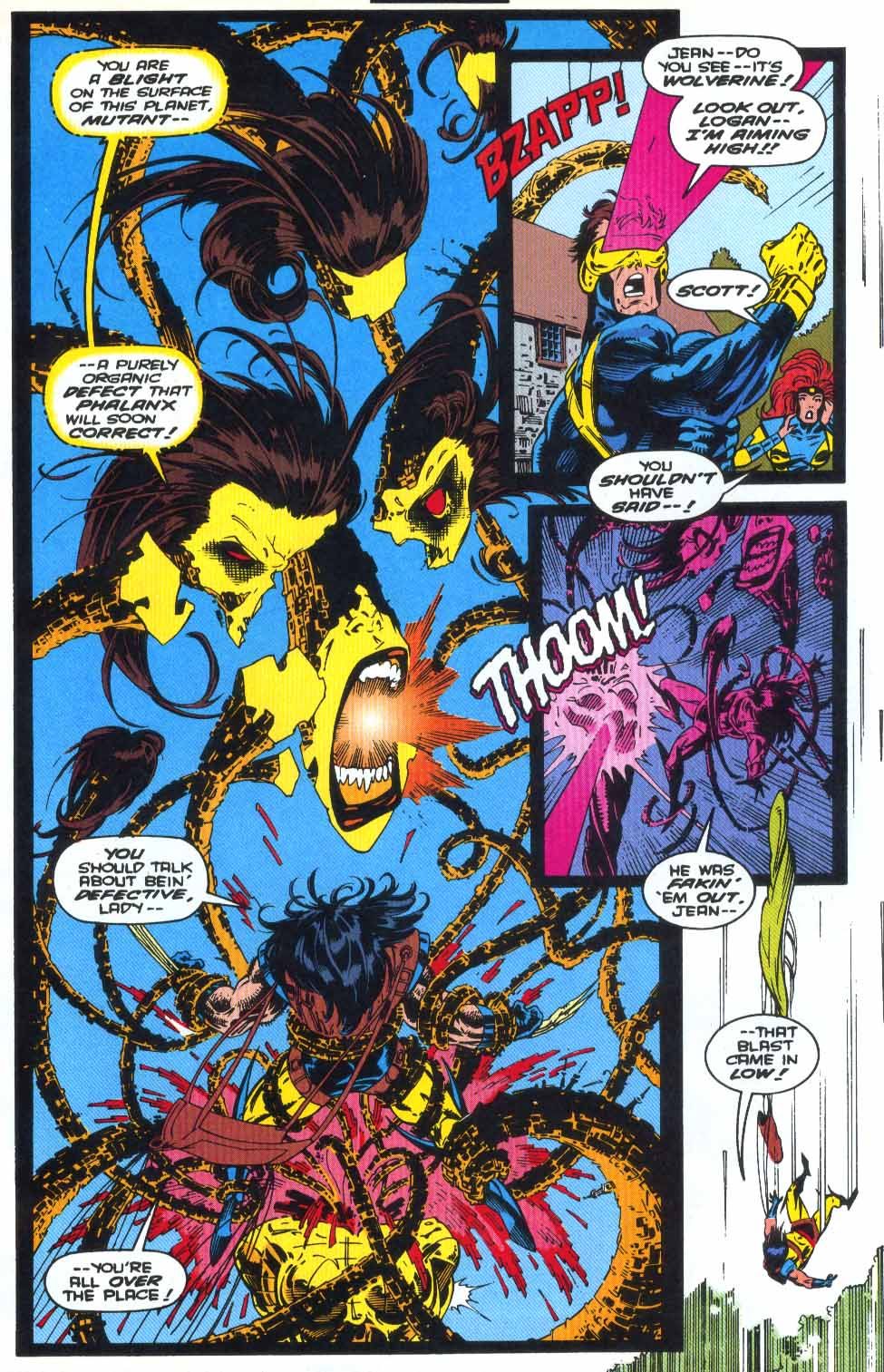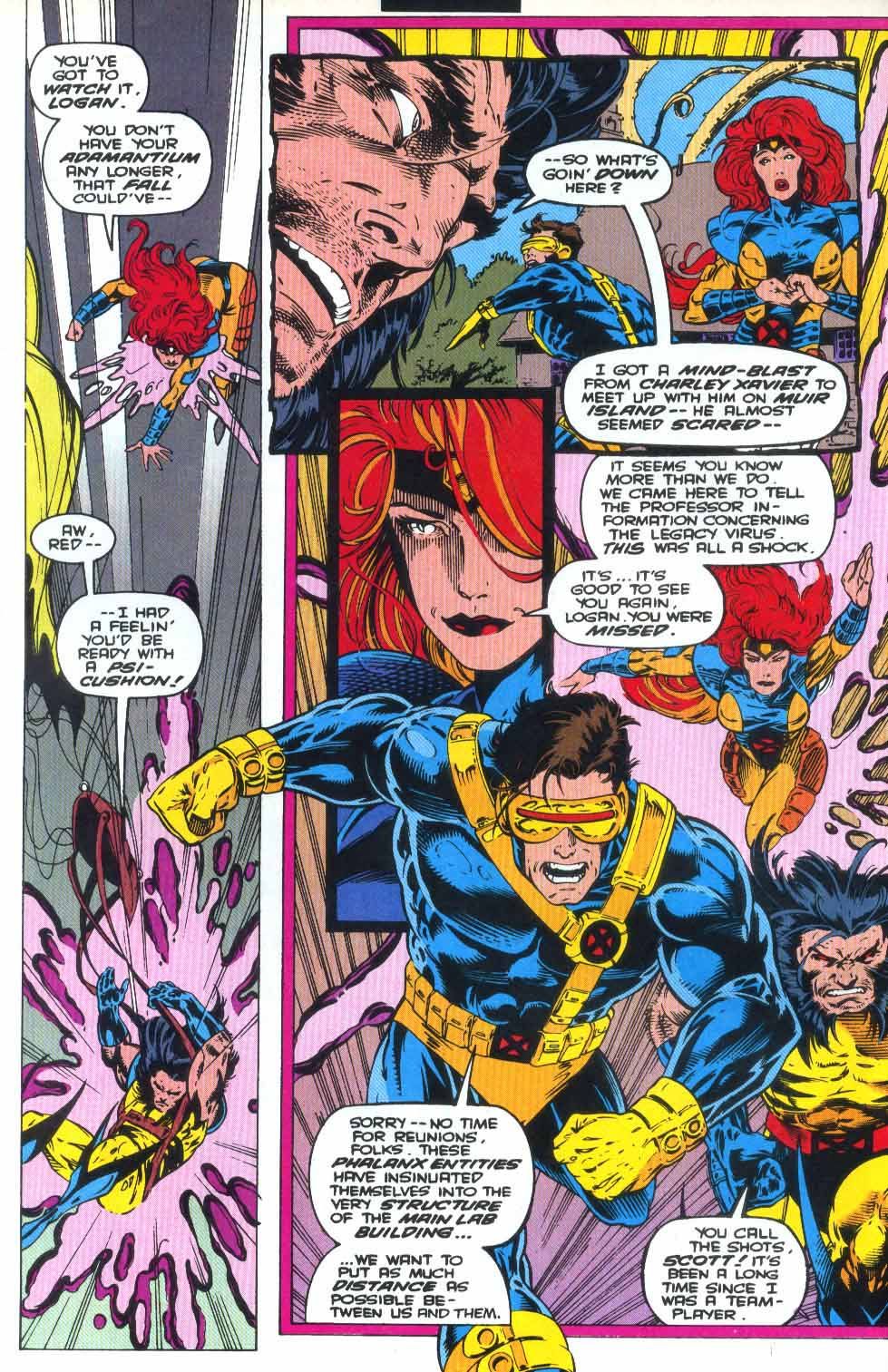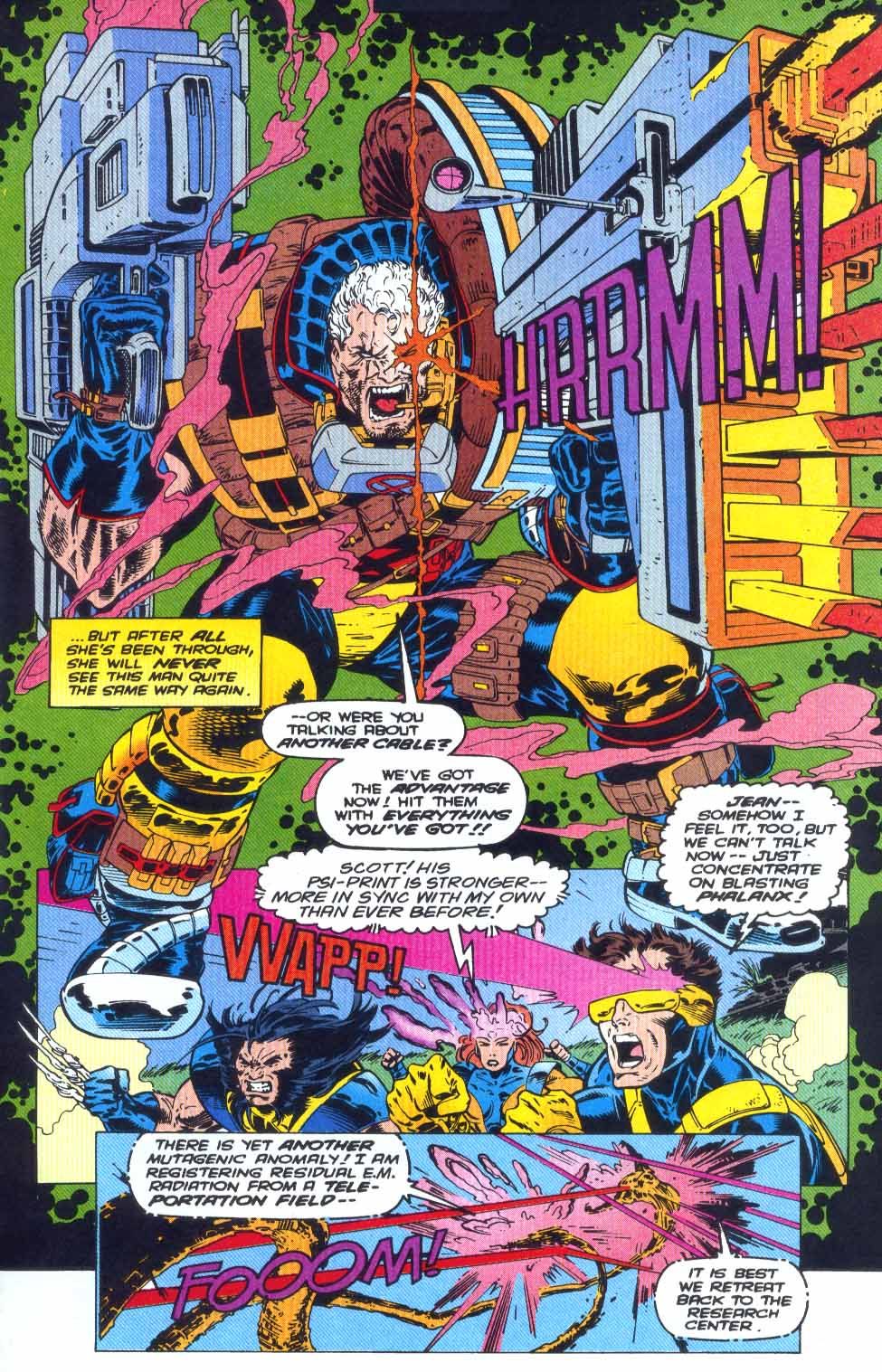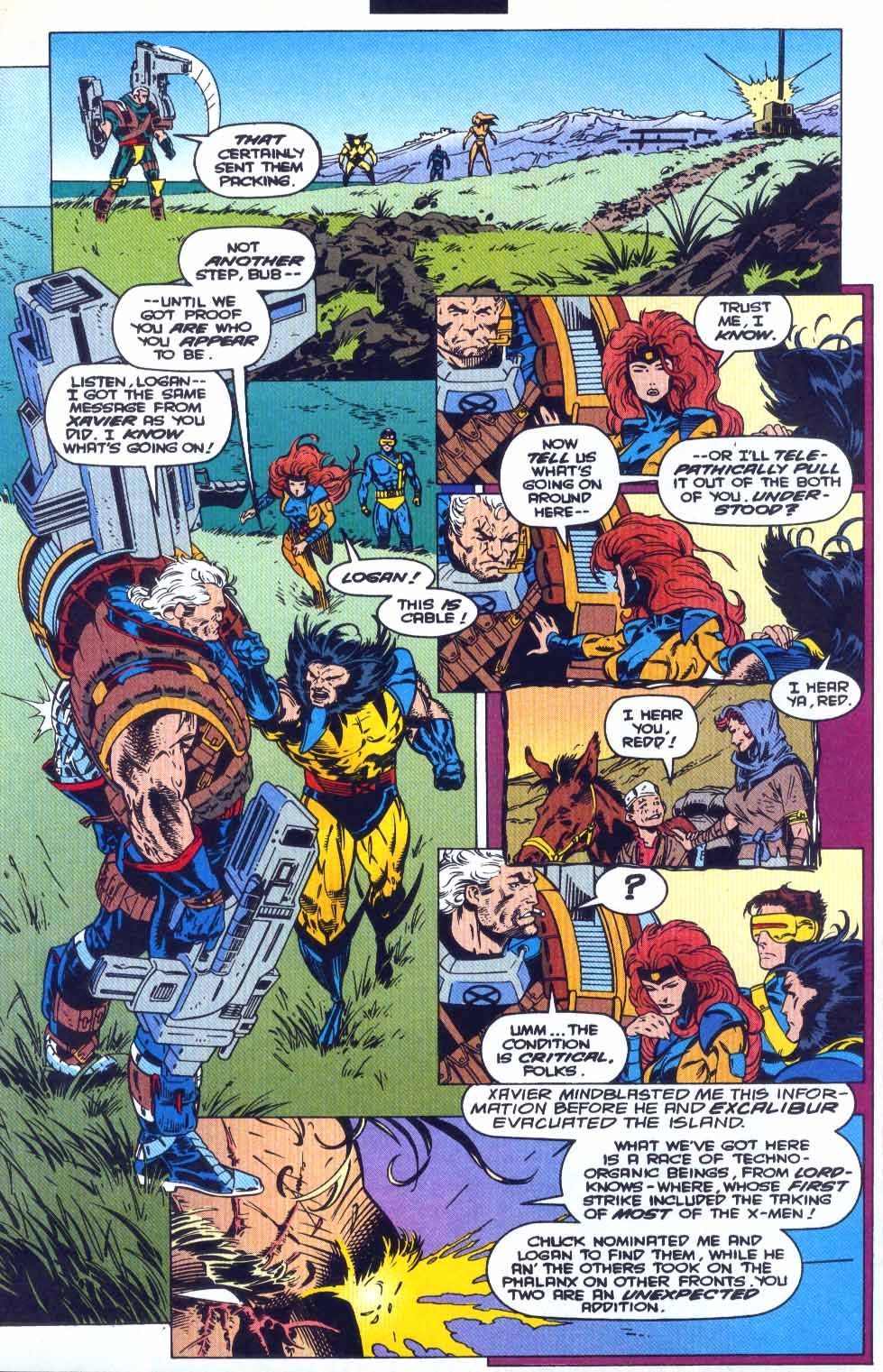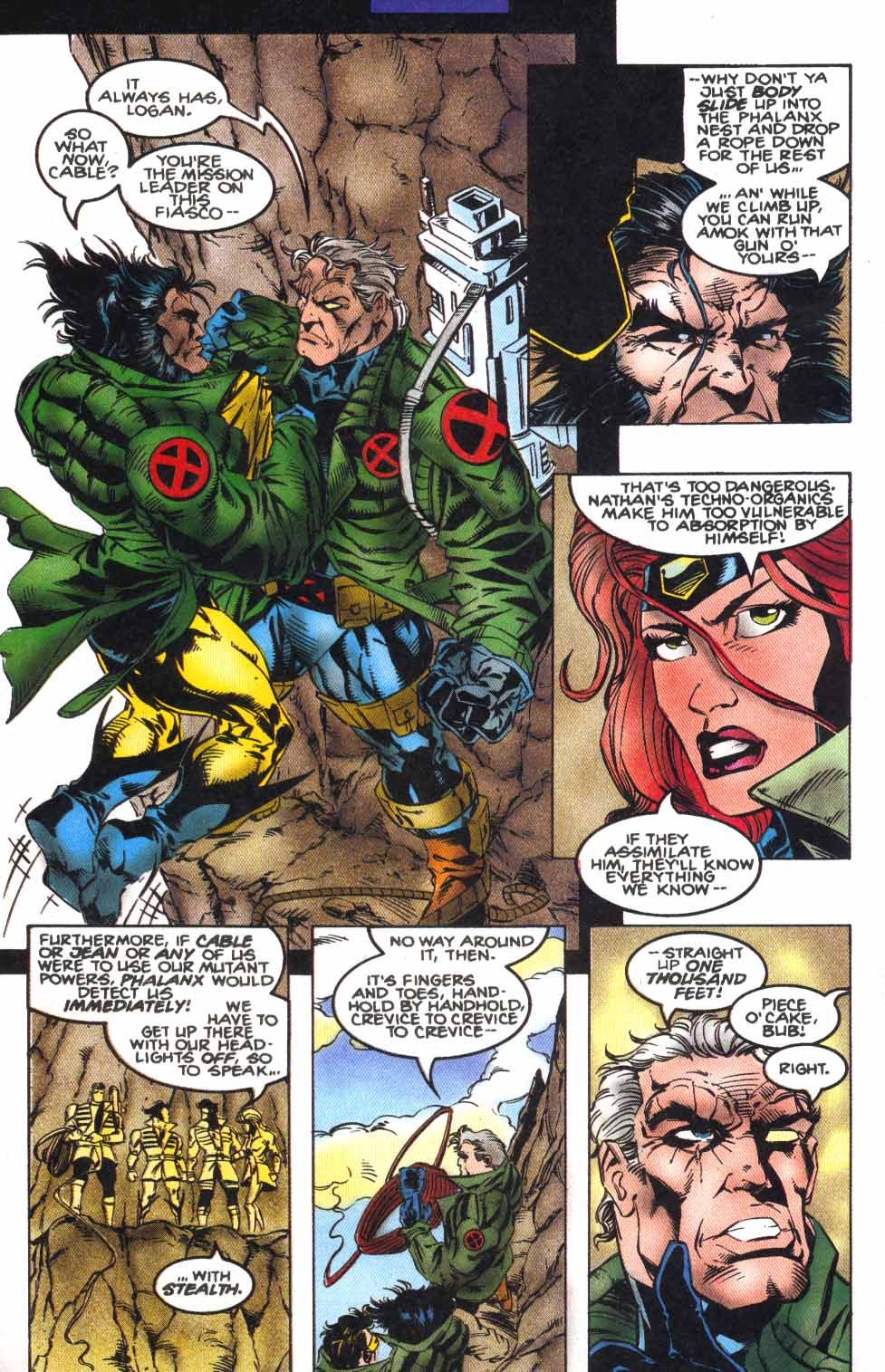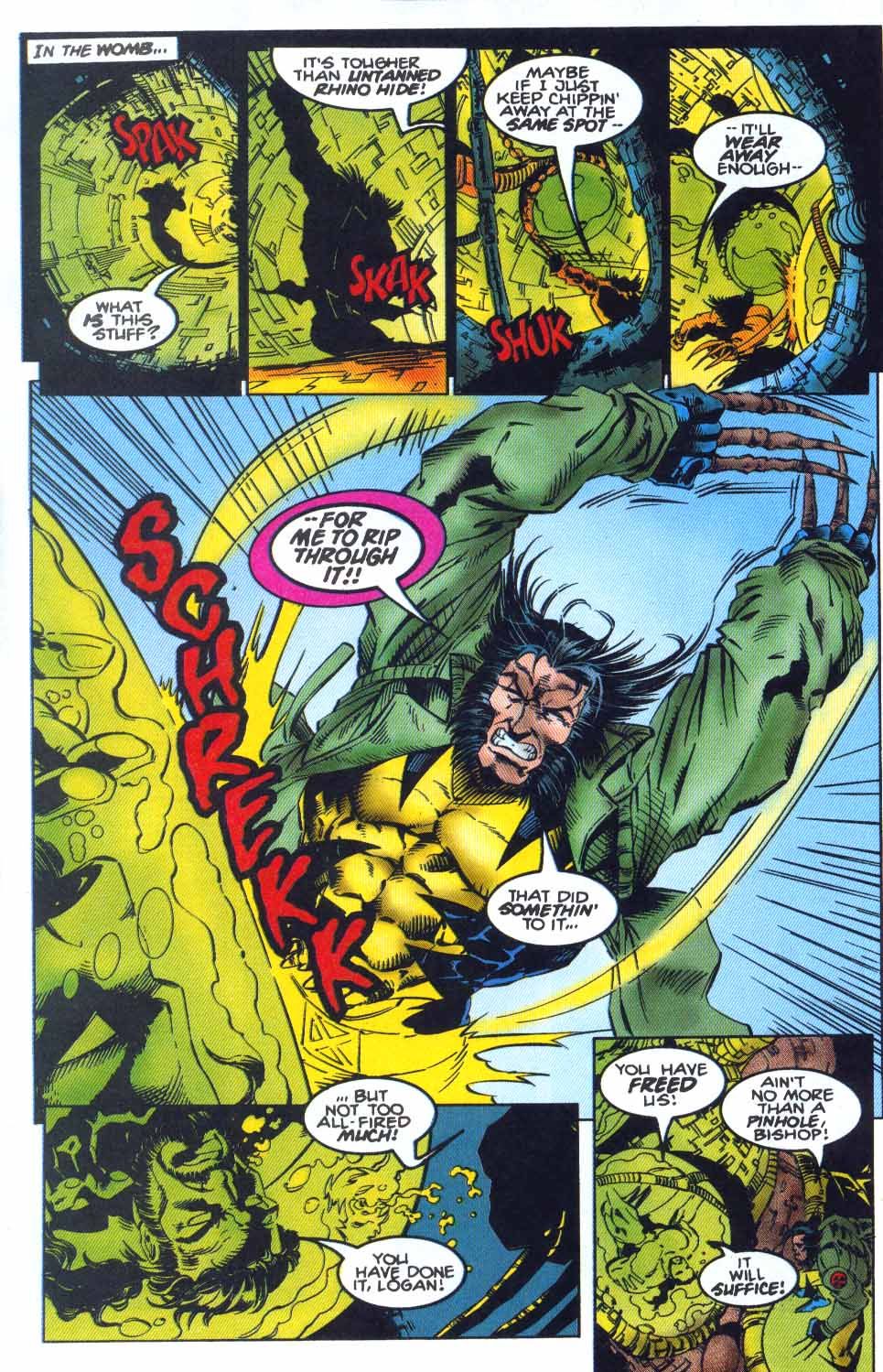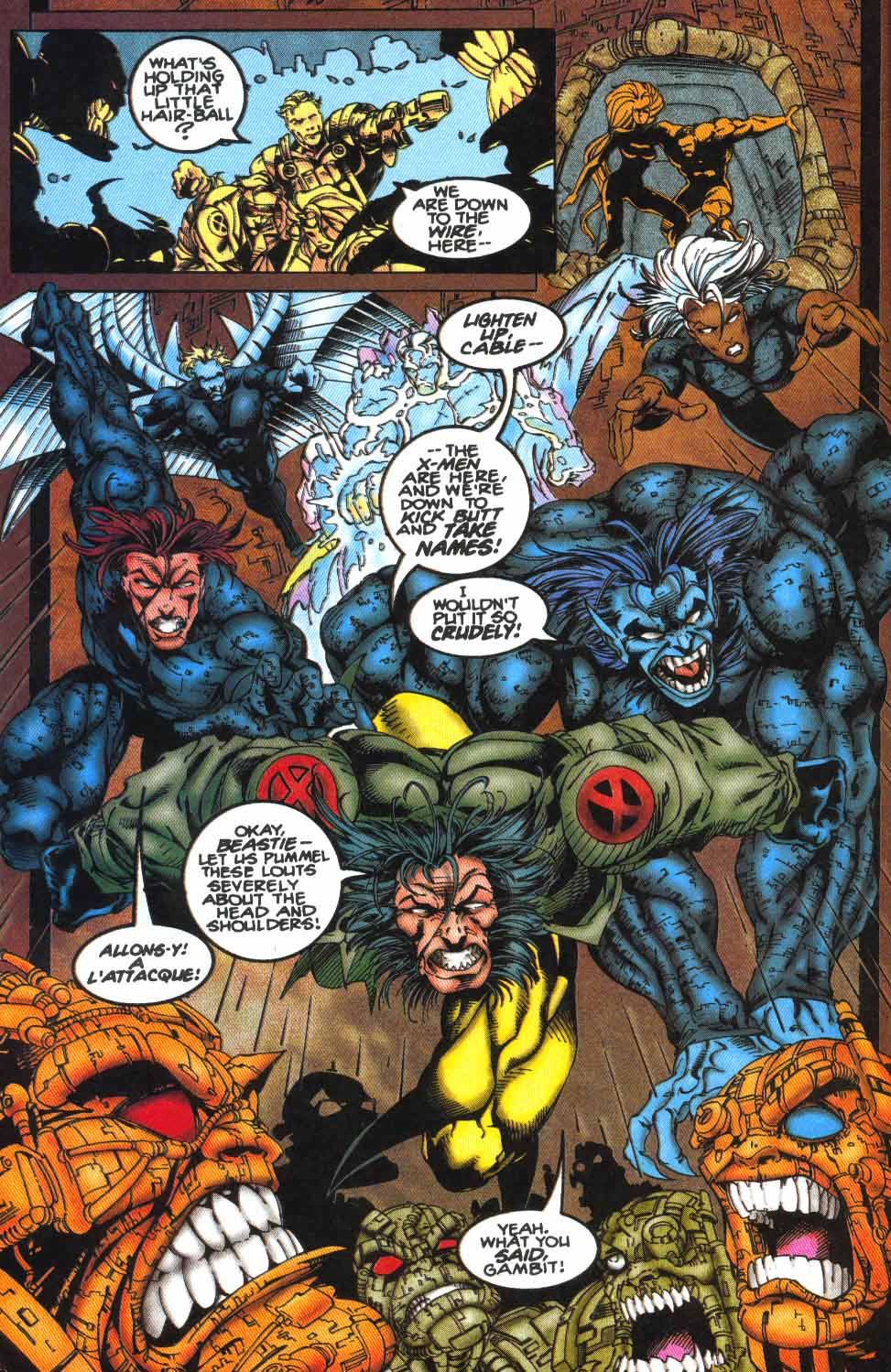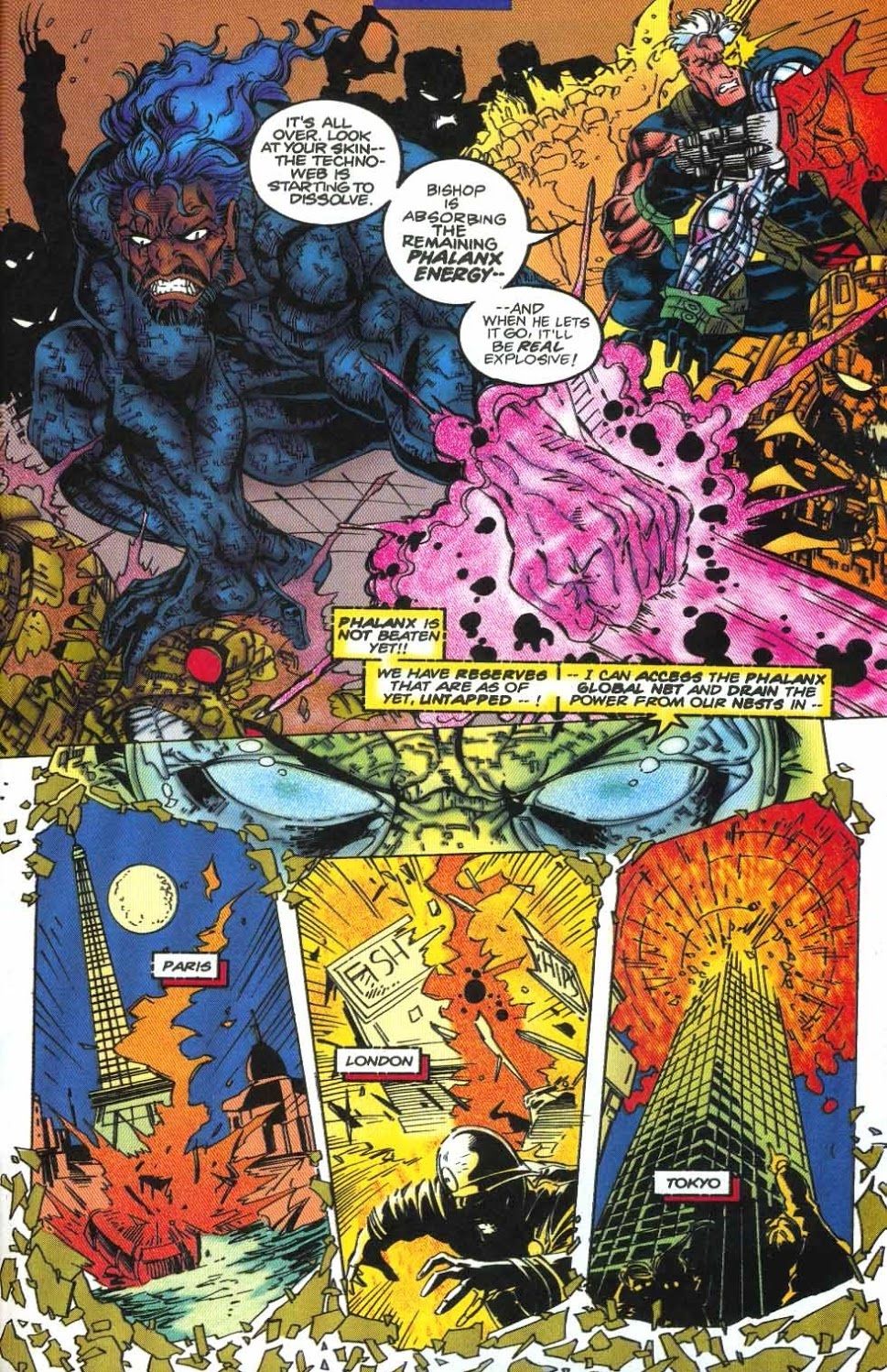This is "Look Back," a brand-new feature that I plan to do for at least all of 2019 and possibly beyond that (and possibly forget about in a week, who knows?). The concept is that every week (I'll probably be skipping the four fifth weeks in the year, but maybe not) of a month, I will spotlight a single issue of a comic book that came out in the past and talk about that issue in terms of a larger scale (like the series overall, etc.). Each week will be a look at a comic book from a different year that came out the same month X amount of years ago. The first week of the month looks at a book that came out this month ten years ago. The second week looks at a book that came out this month 25 years ago. The third week looks at a book that came out this month 50 years ago. The fourth week looks at a book that came out this month 75 years ago.
As July ends, I'm doing all of the Look Backs together.
Next up is a spotlight on the 1994 X-Men crossover, Phalanx Covenant, which began in July 1994.
According to Investopedia, the law of diminishing returns states that "at some point, adding an additional factor of production results in smaller increases in output. For example, a factory employs workers to manufacture its products, and, at some point, the company operates at an optimal level. With other production factors constant, adding additional workers beyond this optimal level will result in less efficient operations."
In 1994, the X-Men titles had somehow not hit the point of diminishing returns, at least not from a commercial standpoint. A lot of this had to do with the fact that the X-Men titles had a surprisingly conservative approach to spinoffs for many years. A lot of that had to do with Chris Claremont's desire to be the main creative force behind the X-Men and Marvel's willingness to go along with that desire since, of course, the guy was the writer on what was becoming their biggest book. Finally, though, Marvel pushed for a spinoff and in 1983, eight years after the All-New, All-Different X-Men debuted, Claremont wrote a new series starring a new generation of mutant heroes called the New Mutants. It was a SMASH success. This was right at the point where the X-Men were becoming THE most popular title at Marvel and adding a spinoff soon made is that New Mutants was the SECOND-most popular book at Marvel. Things got a bit less organic when Marvel pushed for the introduction of a SECOND X-Men spinoff three years later called X-Factor, starring the five original X-Men. This was the first time that Marvel had acted at odds with Claremont with a new X-Men series. The next two series, though, were more in line with Claremont's ideas, as they were both launched BY Claremont! Excalibur and Wolverine were a team of heroes in England by Claremont and Alan Davis and Wolverine, of course, was a solo series for the famous mutant, initially by Claremont and John Buscema (this is how much Claremont hated the idea of expanding the X-Men universe - he insisted on the Wolverine series to be set in the island nation of Madripor and for Wolverine to be undercover as a man named "Patch." Claremont didn't want overlap with the other X-Men titles). Three years later, the X-Men finally got their second ongoing series (Spider-Man had his THIRD ongoing in 1976, so this was a bit of a delay) and the New Mutants relaunched as X-Force. Since that wasn't really a NEW book, there was room for X-Force's leader, Cable, to get his own ongoing in early 1993.
So now, the time was for the next expansion of the X-Men "empire" and what better way to do it than with a crossover?
A couple of other notes - when the X-Men and X-Factor combined their teams to form an expanded X-Men roster (so big that they formed two teams), there were three characters who were a bit superfluous. Banshee and Forge had spent a number of issues putting the X-Men back together, but now that the X-Men were back, there really wasn't much of a place on the team for either one of them. Forge became the team's resident handyman, of sorts, but that left Banshee with generally no role. Early in the launch of the second X-Men series, Gambit breaks his jaw as an excuse to write him out of the series.
Similarly, Jubilee had become out of place, as well. She had saved Wolverine's life after he was almost killed by Donald Pierce and the Reavers and she sort of became his sidekick. That was fine when the X-Men were broken up and even when they initially got together, she continued to hang out because the newly re-formed X-Men were definitely on the unconventional side of things ("Why do we have a Cajun thief on the team now?"). When the team merged with X-Factor to form a new team (adding Rogue along the way, as well), Jubilee still had a role in the book as Wolverine's sidekick who the others let hang around because, well, who's going to say no to Wolverine? Scott Lobdell did some good work with Jubilee in Uncanny X-Men, using her as a sort of point of view character, especially with the tragic death of Illyana Rasputin, but in general, Jubilee really wasn't on the team and she wasn't in school or anything. She was just sort of...there.
Things took another turn when Wolverine left the X-Men after his adamantium was stripped from his body during the previous X-Men crossover, "Fatal Attractions" (unless you count "Blood Ties" as an X-Men crossover). Larry Hama had continued to use her as Wolverine's sidekick in Wolverine's solo series, but now that was through, too, and she was REALLY out of place now.
So this led to Lobdell essentially creating a new series with NEW new mutants to take the place of the previous New Mutants, who had all "graduated" into X-Force.
Meanwhile, the X-Men had also been housing Emma Frost since she was put into a coma in the first issue of Jim Lee and Whilce Portacio's run on Uncanny X-Men. She had recently awoken and now she was ALSO a superfluous character who could use something to do.
Therefore, in Uncanny X-Men #316, Lobdell, Joe Madureira, Dan Green and Terry Austin brought Banshee back to the X-Men now that he was healed, only for him to realize that the other X-Men were all acting rather peculiar...
In a great scene, Banshee uses the X-Men's computer to learn the shocking truth of just how many X-Men are actually on the premises...
The X-Men had also been keeping Sabretooth prisoner for a while at that point (because, you know, they don't care about stuff like "due process" or whatever, they have their own laws. The law of Xavier!), so Banshee rescued Sabretooth, Emma Frost and Jubilee and escaped...
But before he left, he learned that these shape-shifting aliens (called the Phalanx) were trying to find a new generation of young mutants, so Banshee decided that his ragtag team was going to find those mutants first...
In X-Men #36 (by Fabian Nicieza, Andy Kubert and Matt Ryan), we meet the first one of these new new mutants, Everett Thomas, just as he is saved by Banshee and Sabretooth...
Nicieza does a good job showing how Jubilee is handling everything...
In Uncanny X-Men #317, Lobdell, Maduerira and Green show us the collected group of the captured new new mutants...
Monet St. Croix makes an excellent first impression...
One of the mutants, Paige Guthrie, has been infected by the Phalanx, and in X-Men #37 (by Nicieza, Kubert and Ryan), now that everyone is together, Sabretooth reveals the truth about Guthrie's powers...
During the whole time that they were in captivity, there was a sweet young mutant named Caprice who was super scared throughout the ordeal. However, in an amazing moment, she decided to sacrifice herself to save the others...
The moment was so impressive (and the death so relatively vague) that fans soon demanded more Blink. Lobdell would soon give them their wish...but in a whole other way.
Okay, so the new new mutants were freed and thus, Banshee and Emma Frost become the new headmasters at a new school for mutants, thus giving us the new X-Men spinoff series, Generation X.
That's all well and good, but there are FIVE OTHER ISSUES in this crossover! Obviously, it was nice to rescue these new mutants, but what about, you know, the X-Men? And what about the nefarious scheme of the Phalanx? Those stories were addressed in two other storylines that all took place within the overall Phalanx Covenant crossover umbrella.
The remaining three mutant teams (X-Factor, X-Force and Excalibur) met together in X-Factor #106 (all of the non Generation X-related issues in the Phalanx Covenant were extra-sized, leading to some interesting art assignments). Scott Lobdell and Todd DeZago co-wrote the issue, with art by Jan Duursema, Roger Cruz and Al Milgrom.
The teams had a nice "heroes meet up and briefly tussle before teaming up" moment where you can just marvel at the garish costumes they all wore at the time...
Excalibur had a member at the time called Douglock, who was basically a GOOD member of the Phalanx. Forge, who can sort of "see" technology, looked at Douglock and he saw the history of the Phalanx (handy exposition)...
Douglock reveals that there is a spire being built by the Phalanx to create more Phalanx members and also to coordinate their soon-to-be-domination of Earth, so the combined heroes go to destroy it in X-Force #38 (by Fabian Nicieza, Tony Daniel and Kevin Conrad)...
Xavier, though, realizes that the spire is also going to be a beacon to tell MORE Phalanx from outer space to come conquer Earth! One of the spires had the X-Men captive (the Phalanx could not yet assimilate mutants, thus leaving the X-Men alive), but Xavier revealed that they really might have to sacrifice their friends in order to prevent the Phalanx from signalling for more help...
Excalibur #82 (by Scott Lodbell, Todd DeZago, Ken Lashley, Steve Epting and the combined inking talent of Philip Moy, W. C. Carani, John Floyd, Harry Candelario and John Livesay) sees Douglock (paired with Cannonball and Wolfsbane, as they are closely connected to Doug Ramsey, the person who Douglock seems to be a resurrected version of) and Forge pull off coordinated attacks to stop the spire from calling more Phalanx and also destroying the breeding ground for more new Phalanx members...
Okay, but what about the captive X-Men?
That fell to the final part of this crossover, a two-parter by Larry Hama in the pages of Wolverine #85 (art by Adam Kubert, Mark Farmer and Joe Rubinstein) and Cable #16 (art by Steve Skroce, Mike Sellers and Matt Banning), we see that there are a few "free agents" out there, namely Wolverine (who had left the X-Men 10 issues earlier), Cyclops and Jean Grey (who were just getting back from their honeymoon, which they actually spent having their brains go into the future to raise a young Cable for years) and Cable (who had left X-Force for some reason). So they all teamed up to rescue the X-Men...
There was a whole lot of "Hey, remember when we raised Cable in the future?" awkwardness between Cable and Jean Grey and Cyclops...
In Cable #16, they continue their plan to rescue the X-Men...
And, well, they rescue the X-Men...
Steve Skroce really did a great job, right?
Okay, that's the Phalanx Covenant, the only X-Men crossover that really didn't have the X-Men in it much at all, right?
If you have any suggestions for August (or any other later months) 2009, 1994, 1969 and 1944 comic books for me to spotlight, drop me a line at brianc@cbr.com! Here is the guide, though, for the cover dates of books so that you can make suggestions for books that actually came out in the correct month. Generally speaking, the traditional amount of time between the cover date and the release date of a comic book throughout most of comic history has been two months (it was three months at times, but not during the times we're discussing here). So the comic books will have a cover date that is two months ahead of the actual release date (so October for a book that came out in August). Obviously, it is easier to tell when a book from 10 years ago was released, since there was internet coverage of books back then.

